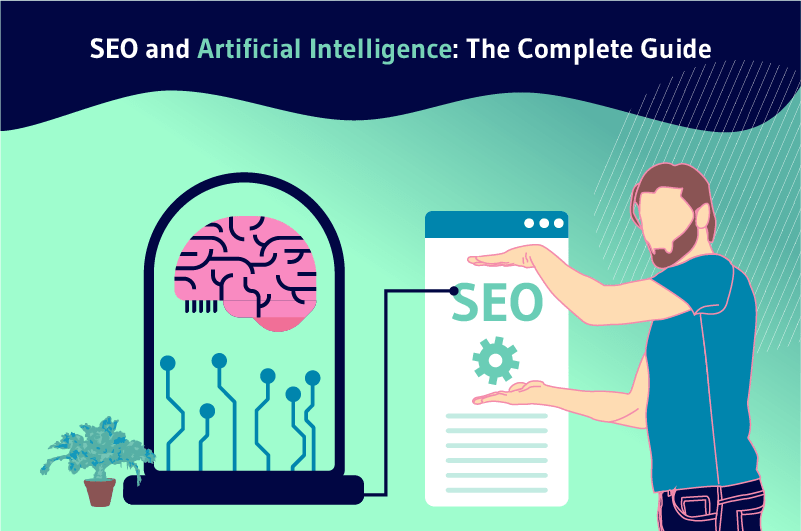Artificial intelligence (AI) is no longer just about robotics and science fiction. Digital marketing and particularly SEO is also affected by this wave of new intelligent and revolutionary technologies. We have for example RankBrain, Google’s intelligent algorithm developed to understand the search intent of Internet users in order to better refine search results.
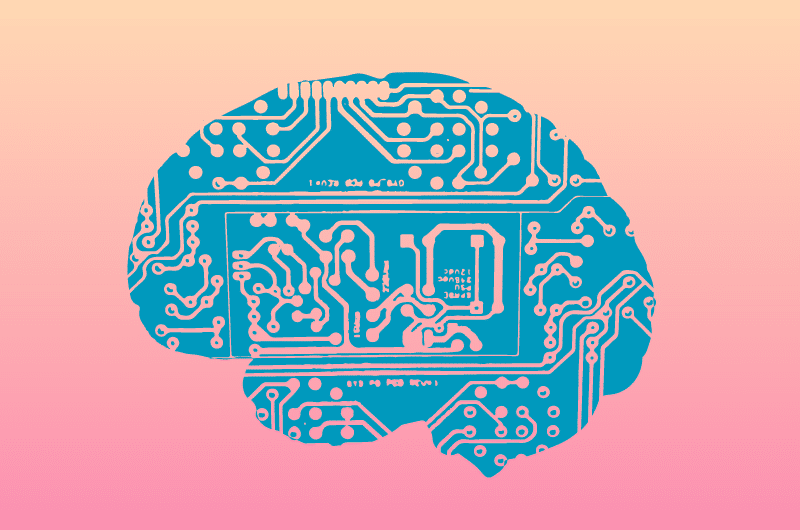
Or this Moz study where 75% of the subjects questioned said they used Artificial Intelligence to deal with tasks they considered too time-consuming or too difficult.
So, concretely:
- What is artificial intelligence?
- How can AI be useful in SEO?
- How to combine artificial intelligence and SEO for more effective and efficient SEO strategies?
- And what will be the future of “traditional” natural referencing that we all know today?
So many questions to develop over the course of this guide to help you get the most out of an AI-enhanced SEO strategy.
Chapter 1: Artificial Intelligence in SEO: Definition and importance
Before discovering how AI can be useful to you in SEO, let’s first find out what it is in practice.
1.1. What is Artificial Intelligence?
Ask 10 experts this question and chances are you’ll get 10 different answers. However, there is no need to take courses in astronomy or robotics before understanding the basics of artificial intelligence.
When we return to the question “what is artificial intelligence?”“ to Demis Hassabis, CEO of DeepMind, an AI startup now owned by Google, he gives us a rather simple and accessible definition for everyone: Artificial Intelligence is the science of making machines intelligent”.
To make it even simpler, we can say that the objective of Artificial Intelligence is to offer machines the ability to see, speak, hear, move and write on their own without any human assistance.

Source : Les echos
Today, there are several AI machines equipped with an automatic learning system that manage to improve and adapt their responses or their reactions according to the situations encountered without actually being initially programmed for it.
These “intelligent” machines are able to reflect and gradually improve on the basis of empirical data collected during past experiences. One of the best-known examples of artificial intelligence is undoubtedly Siri, Apple’s voice assistant, or Alexa, that of Amazon.
You can tell these smart machines to play your favorite playlist on Spotify for example or give you the weather tomorrow. They will be able to hear your voice, understand the words you have spoken and respond to your request without being assisted or controlled by a human.
The voice assistant Alexa, for example, is not really programmed to improve its responses over time, but it still manages to analyze the data of its past interactions with users to propose other more appropriate responses for future interactions. more interesting.
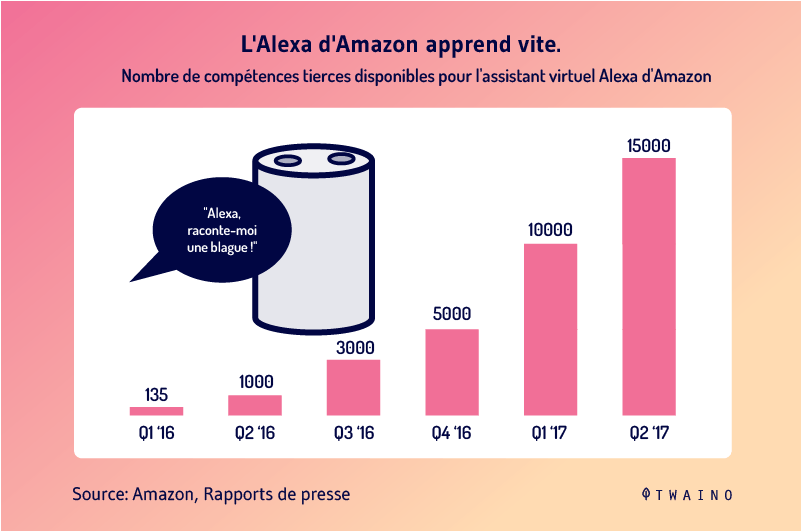
In December 2018, a study was conducted to assess the quality of the answers offered by Alexa. The study noted a clear improvement of 12 points on the responses of the voice assistant with an accuracy of 73% compared to its performance recorded 5 months earlier.
If Alexa were a simple traditional program without artificial intelligence, human assistance would be needed to improve it whenever it fails to properly process a request from an Internet user.
Which is impossible since with the millions of users that the voice assistant has, it will also be necessary to set up millions of commands that can be executed in real time.
But thanks to Artificial Intelligence, Alexa works with a machine learning algorithm that allows it to learn and improve much faster.
As can be seen, AI provides access to exponential new capabilities to intelligently and with millimeter precision process a significant amount of data at large scale and at high speed. Which literally crushes any traditional competition, human or machine.
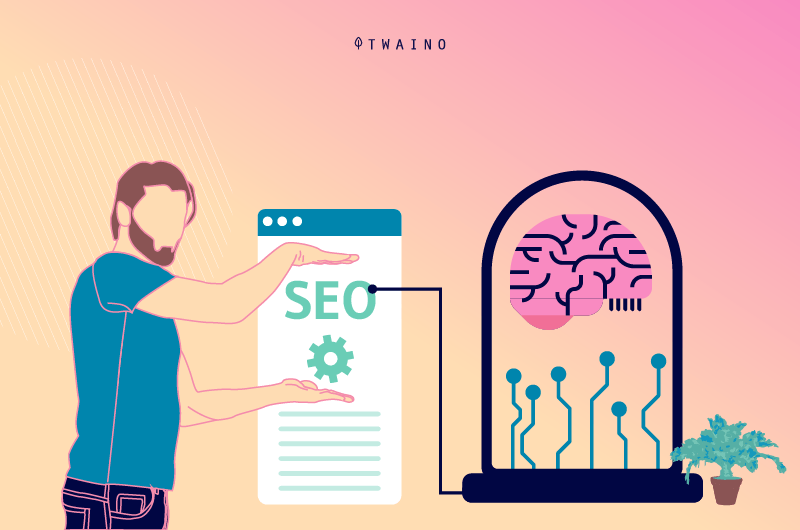
But what link can we note between SEO and Artificial Intelligence? For this, it would be helpful to first understand how a search engine works.
1.2. Understanding how search engines work
Broadly, a search engine is a software system that indexes data published on the Internet.
This means that they read the raw code of your website and other sites available on the web to analyze their contents, location and many other things.
But let’s see all this in detail:
1.2.1. What is a search engine index?
After a web page has been crawled by a search engine, it is added to a data structure called an index. Web pages are placed in the index according to a number of ranking criteria specific to each search engine.
We find in the index of a search engine, the URLs of the pages visited, but also other important information such as:
- The type of content encountered on the page;
- The theme addressed on the page;
- The targeted keywords;
- The page update frequency
- The engagement of Internet users on the page through signals such as the number of clicks obtained, the average session duration, the bounce rate, etc.
1.2.2. What is the purpose of a search engine?
The purpose of a search engine is to offer a list of relevant response elements to respond as effectively as possible to the questions posed by Internet users.
And it is up to Internet users to choose an option among the proposed answers generated by the search engine. The most chosen options in addition to other factors will then be taken into account by the engine algorithms and may then affect future rankings.
1.2.3. How does a search engine work?
Before proposing web pages to respond to Internet users’ requests, a search engine essentially operates in 3 phases, namely:
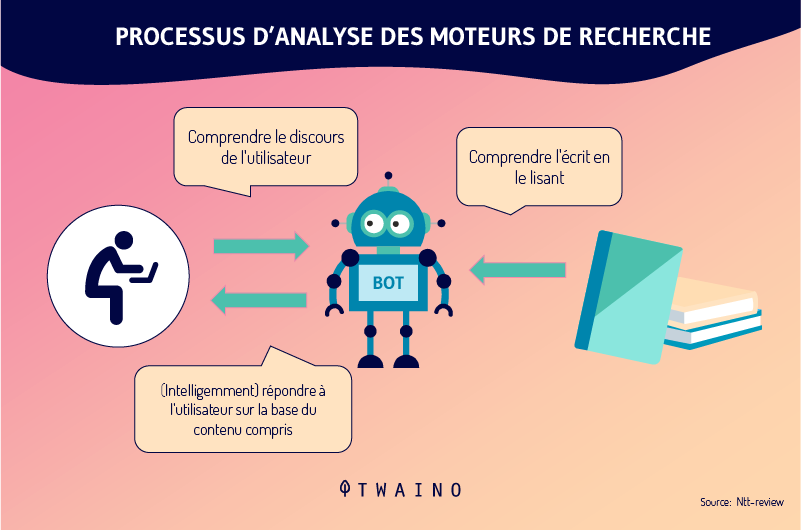
- The crawling
- The indexing
- And the classification itself.
Concretely, how does each of these phases work?
1.2.3.1. Crawling
Crawling is the discovery phase where search engines crawl the web through crawlers to identify newly published or recently updated content.
Google’s crawler is named Googlebot and happens to crawl websites using a set of spiders to examine web pages and analyze them.
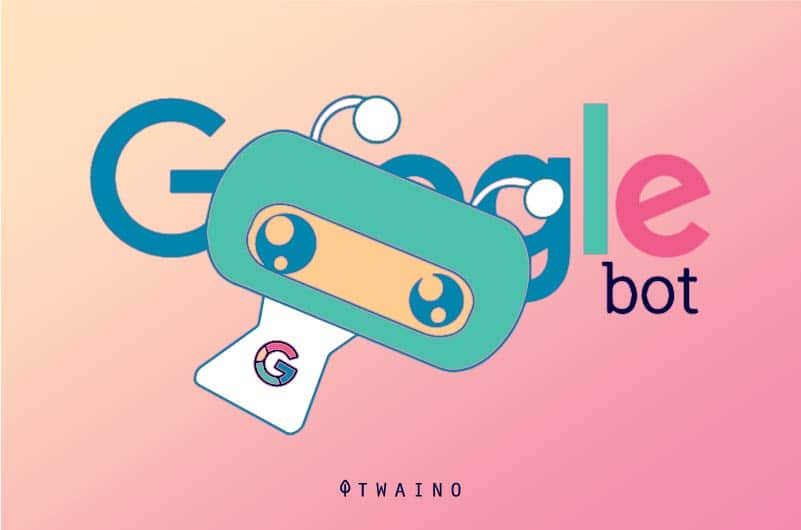
These spiders are automated programs that search for certain given criteria related to the content of websites such as given keywords or phrases.
Crawled content can be anything from a web page to an image, video or PDF file and they are discovered via their URLs.
When crawling, GoogleBot is able to identify fresh content and list their URLs in the search engine’s index, called Caffeine.
It is only the URLs present in this index that can subsequently be sorted and then selected to respond to the request of Internet users.
Clearly, if one of your pages is not indexed by Google, there is no chance that it will appear in the search engine results, no matter how much SEO effort you will have. supplied.
1.2.3.2. Indexing
Indexing is the phase where crawled content is actually stored and organized in the search engine’s database. This is content that search engines have deemed sufficiently relevant to be displayed as a response to Internet users’ queries.
1.2.3.3. Ranking results on the SERPs
Ranking is the process of ordering search results according to their relevance.
When an Internet user launches a search, search engines scan their indexes for highly relevant content and rank it in a way that meets the Internet user’s needs.
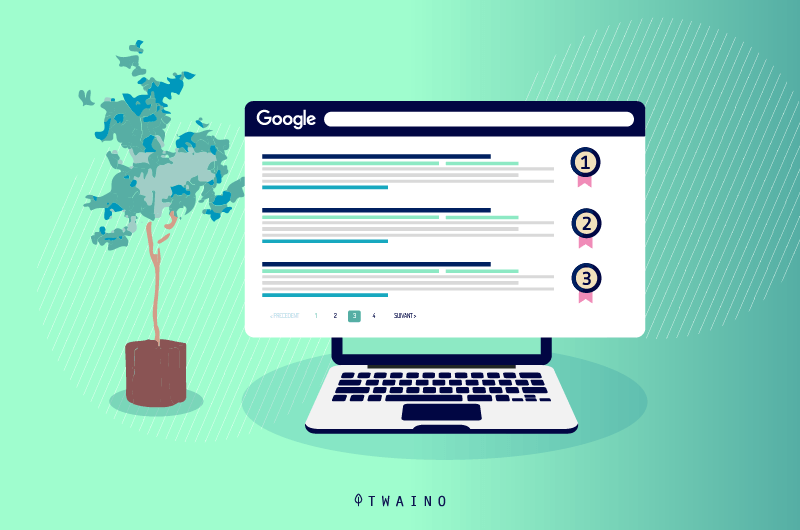
In a way, we can say that the ranking occupied by a website indicates the importance that the engine gives it for the query.
So if you really want Internet users to be able to find and consult the contents of your site, you must first ensure that they are crawlable and indexable by engine robots.
It must be said that it is also possible to prevent crawlers from accessing all or part of your site, as well as to ask search engines to omit storing some of your pages pages from their index .
1.2. What is the importance of Artificial Intelligence in SEO?
First of all, it is a technology used by Google, the world leader in online search.
The search engine has made a number of algorithm updates that use AI over the past few years, each of which has completely transformed organic search sites to better serve the end user.
Itmust be said that search engines are increasingly advocating a good user experience to guarantee Internet users the most relevant content possible.
As a result, SEO optimization is no longer limited to a simple insertion of keywords, it also takes into account the user’s search intention in order to offer him relevant content that is truly adapted to his needs.
Thus, techniques for manipulating Google’s algorithm such as keyword stuffing, for example, have become completely obsolete and ineffective because of search engines that are becoming more and more intelligent.

For your content to earn a good ranking on the search engine, you need to have a good link building strategy and an AI-enhanced SEO strategy.
Today, as in the future, a positive user experience will remain one of the most decisive ranking factors in winning the top positions in search engines, especially those of Google. And to achieve this, AI combined with SEO is one of the most effective means you have.
Also, it has been shown that artificial intelligence is capable of increasing the effectiveness of marketing strategies.
Statistically, 30% of companies saw a 6-10% increase in revenue after implementing AI technology.
Additionally, in 2019, 37% of companies said they use AI in some form to optimize their business operations.
Basically, artificial intelligence can be used to improve the ranking of websites in search engine results pages as well as the conversion rate.
However, while artificial intelligence is important in this regard, it should not replace human SEO experts.
Rather, it should be seen as a way to help supplement the work humans do in SEO.
What does this mean to you ? This means that artificial intelligence can be used to help make SEO more effective.
It should not replace the work done by humans, but rather should be seen as a way to help humans stay competitive in the world of SEO.
1.3. 4 Reasons to use Artificial Intelligence in your SEO optimization strategy
So, ready to add AI to your current SEO strategy? Here are some reasons that should persuade you to take the plunge:
1.3.1. Artificial Intelligence helps improve your site’s conversion rate
Artificial intelligence in SEO helps marketers and content creators craft content that really engages people and converts them into customers.
To do this, the AI associated with SEO strategies will, among other things, analyze keywords, web page data and user behavior in order to determine the best ways to improve your site and make it attractive enough to encourage visitors to purchase.
And one of the biggest advantages is that it’s not limited to any particular niche or interest, which means you can reach more potential customers with a higher conversion rate.
In addition, studies have proven that a site that offers a relevant and intuitive search system can increase its conversion rate by up to 216%. AI capabilities make this type of user-friendly site quite possible for a better return on investment.
1.3.2. Artificial intelligence makes it possible to increase the relevance of content
It must be recognized that creating engaging and relevant content on a regular basis is a rather difficult task.
The thing is, unlike traditional copywriting, the goal of SEO copywriting is to successfully move the reader through each stage of the marketing sales funnel. This requires more time, more resources and more energy.
The advantage with Artificial Intelligence is that it facilitates this process of creating relevant content for the web thanks to the data that may have been collected from users.
It is a task that becomes faster and particularly precise with the help of intelligent algorithms. This may include, among other things, information such as the types of content a target audience prefers, the questions they are looking for answers to, their personal or business needs, etc.
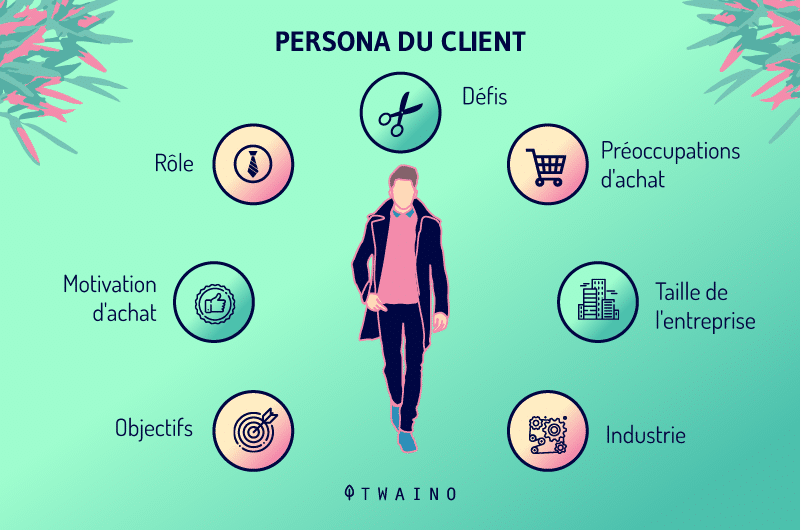
Once this information is available, it can be organized and then used to create extremely engaging content.
AI also includes topic detection, which means it can detect the content of your web pages to determine what kinds of topics are mentioned.
It then assigns a relevance score for all the keywords on your page. Which is very useful because it can help you determine irrelevant keywords for your page.
Moreover, it must be said that Artificial Intelligence is not limited only to collecting data. She is also able to write several types of content in just a few seconds and semi-autonomously.
And this is not an upcoming project. Today, there are tools capable of generating a blog article or content for a sales page by just entering the main keywords of the page.
In Japan, for example, an intelligent machine won first prize in a literary competition by writing a short novel.
In journalism too, AI is already used to generate text with a tenfold increase in production and a 20% gain in free time observed on journalists’ schedules.
The Washington Post also has its own smart tool which generates about 70 articles monthly.
However, it should be noted that when it comes to producing truly interactive content, AI cannot always beat humans because machines have not yet acquired the ability to connect to the player from one point from an emotional point of view.
The current content you read, for example, has been 30% generated by artificial intelligence.
To remain faithful to the editorial style of my blog and above all to make the content as understandable as possible to my audience, which is still a beginner in SEO, I had to personally edit certain sections.
And that’s why artificial intelligence, although it can be very effective in many ways, should not replace human SEO experts.
What does this mean to you ? This means that artificial intelligence can be used to help make SEO more effective.
It should not replace the work done by humans, but rather should be seen as a way to help humans stay competitive in the world of SEO.
1.3.3. Artificial intelligence improves the usability of your site
Thanks to artificial intelligence, you can optimize your website so that it is easier to use, thus making it accessible to mobile users and people with disabilities.
AI also makes it possible to analyze the interests of the user more precisely, then direct them to the pages most likely to meet their requests or needs.
For example, if a person uses a mobile device, the AI will optimize the website for that type of device.
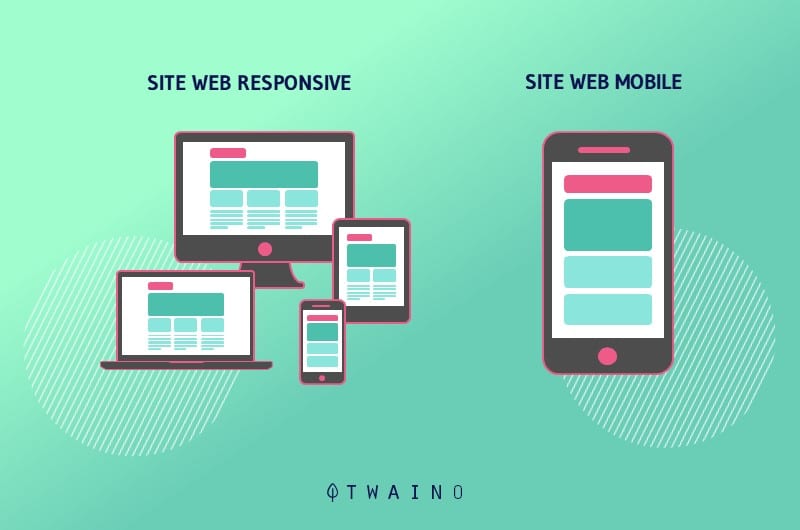
Likewise, if a person has a disability that prevents them from using conventional interfaces, web pages optimized for their needs will be presented to them.
So far, these AI techniques have proven to be an important tool for SEO.
In fact, some websites have even seen more than a 20% increase in conversion rates after implementing AI optimization techniques.
A study conducted by Optimizely also revealed that implementing AI website optimization improved conversion rates for their users. They also saw a 60% increase in traffic to their featured pages.
This is because it can precisely target visitors so that they find what they are looking for on the site quickly and without confusion.
Clearly, if you want to improve your conversion rates and attract more visitors to your website, it would be wise to invest time and resources in artificial intelligence.
It can benefit SEO in many ways, especially when it comes to improving your site’s usability.
1.3.4. Artificial intelligence can automate keyword research for more efficiency
Artificial intelligence can also help you identify keywords for your site that are easy to rank for, but are not yet exploited. Typically, the traditional method of searching for keywords consists of:
Going to Google and typing “keyword tool”:
- Choose and connect to one of the tools offered by the search engine;
- Enter your domain name;
- The tool will provide a list of potential keywords, which you can filter by placement, competition level, monthly searches, CPC, suggested bid amount, and more.
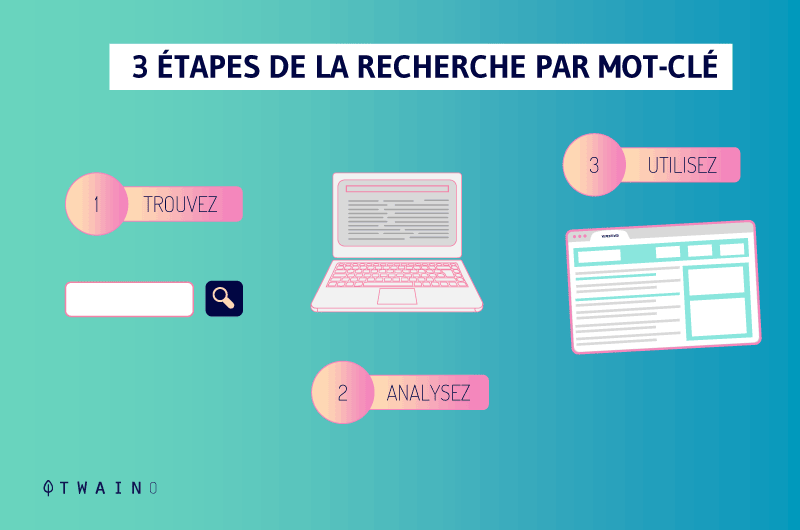
For more precision, the process can be repeated with several tools. But with AI, keyword research can be fully automated to increase productivity while keeping the same precision in the work, if not more.
1.3.5. Artificial intelligence can better understand the needs of your target audience
It is important to have a deep understanding of how consumers think about products and what motivates their actions so that your company can offer better solutions.
And for that, with the classic method, you have to:
- Read user reviews to identify the limits in your offer;
- Conduct customer interviews to better understand the issues you need to address, then rank them in order of importance;
- Understand features of your site that are confusing or complex in order to simplify them;
- Examine the design principles of your website, to determine the best way to present information according to the cognitive abilities of users;
- Perform user testing on your website to ensure it is intuitive and functional.
Apart from meeting your customers face-to-face, the rest of the steps can also be fully automated using Artificial Intelligence to save time and resources.
As we can see, AI has several advantages for your SEO strategy, especially in terms of effectiveness, productivity and efficiency.
Chapter 2: How does Google use AI for its SEO algorithm?
If the importance of Artificial Intelligence in SEO is causing so much ink to flow, it is not only because of its usefulness in the ranks of SEO specialists.
It is also because search engines and Google in particular are increasingly using AI technologies to refine their results and offer relevant content to users.
2.1. What is the Google Algorithm?
First, let’s break down the word “algorithm”: it’s an Arabic word meaning “computational science”. Algorithms are basically sets of rules or instructions programmed to solve some type of problem.
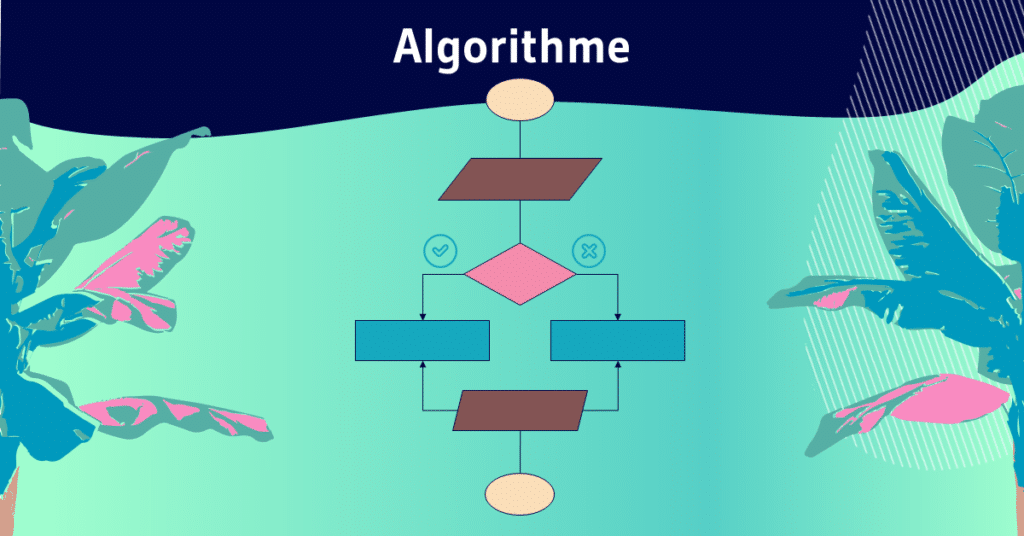
What are Google’s algorithms? Well, Google has “goals” it wants to meet. Among other things, it tries to give users the information that best suits their needs and desires by prioritizing relevant searches and content.
Google wants to be seen as a provider of relevant and valuable content rather than a provider of advertisements.
This means that he must eliminate sites with irrelevant content in order to guarantee a better experience for Internet users.
And to achieve this, Google uses algorithms and more than 200 ranking criteria to process the data stored in its index and quickly decide in order of relevance the best placed pages to respond effectively to Internet users’ requests.
2.2. Google’s Algorithm Update Frequency
In its early days, Google made far fewer adjustments to its algorithm than it does today. But for quite some time, the search engine has been making hundreds of updates every year, big and small. Most of them are small changes, but every now and then Google releases a major algorithm update.
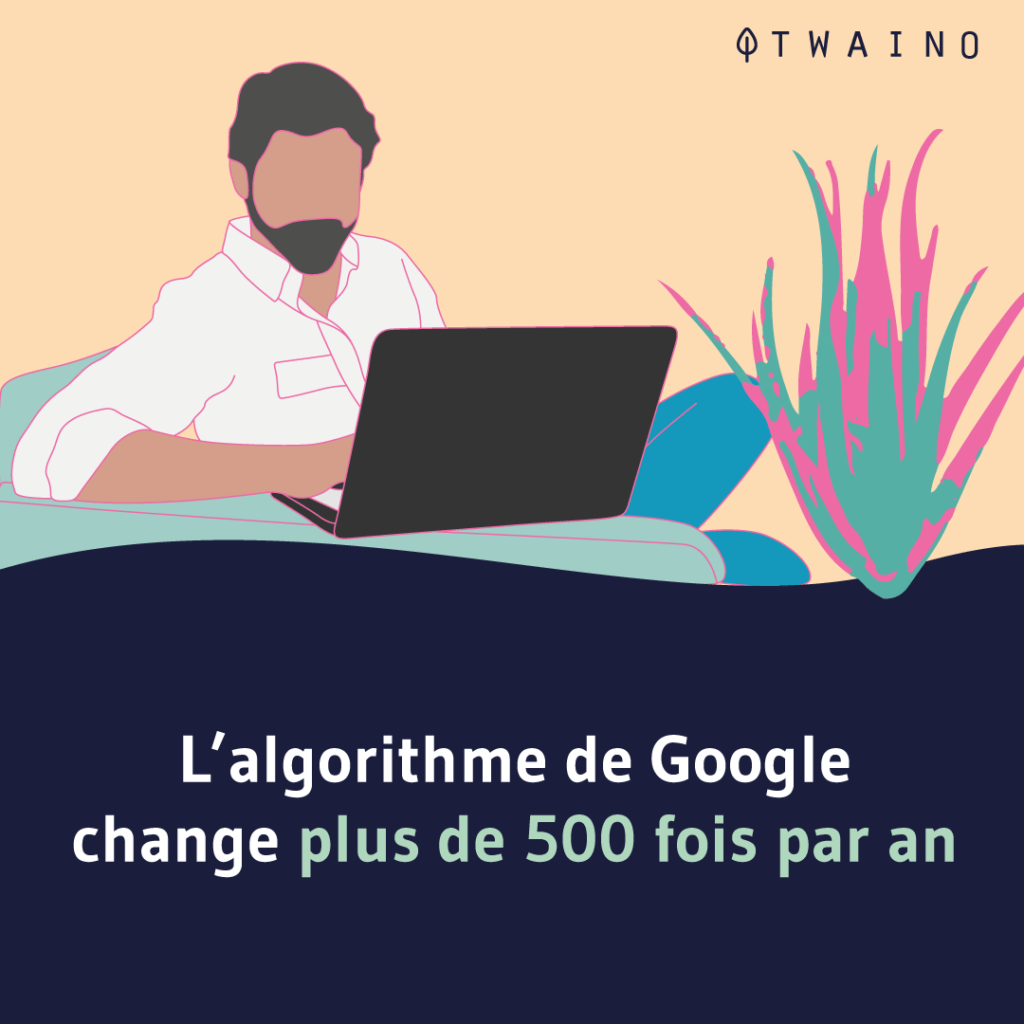
The biggest algorithm tweaks are usually big events that SEO experts and webmasters need to prepare for. When Google makes a “major update,” which it does about every six months, that’s a “significant change” that can shake up the SEO industry.
This frequency of Google algorithm updates is because Google needs to ensure that it is providing the best information to its users.
For example, if an Internet user is looking for a culinary recipe, the search engine must make sure to offer him the latest trends in terms of culinary recipes.
2.3. How does Google Hummingbird work?
Typically, after a search on Google, an algorithm in the background analyzes your query and tries to make sense of what you are looking for. Well, Hummingbird performs this function.
It differs from previous algorithms (Panda and Penguin) in that it is conversational in nature.
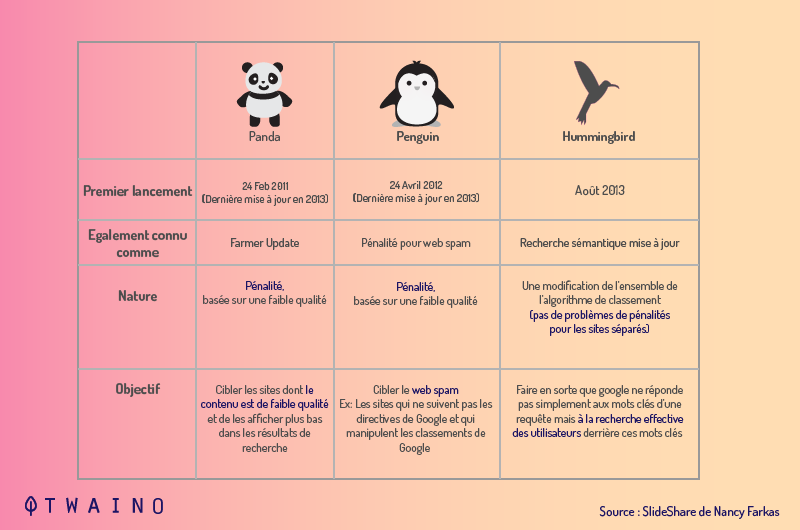
Even though the fundamentals of the algorithms have not changed, Hummingbird has been remarkably successful in demonstrating Google’s desire to better understand the search intent of Internet users.
It is the first algorithm really capable of understanding a query of several words in its entirety.
When Hummingbird encounters your search query, it analyzes the words entered and tries to understand them together as a whole sentence.
This is also why it is nicknamed the semantic search algorithm because until then, the search engine processed search queries by trying to find meaning for each word entered.
Indeed, before the appearance of Google Hummingbird, each word was analyzed separately. But today, the search engine is able to understand the overall intent of a group of words or a complete phrase.
But for all this to be possible, Hummingbird was the result of a real research effort on semantics. Indeed, semantic research makes it possible to establish a correspondence between the different words of a query for a better understanding.
For example, imagine that you are searching on Google for “paediatric ophthalmologist”. Google will suggest pages that deal with the health of children’s and babies’ eyes.
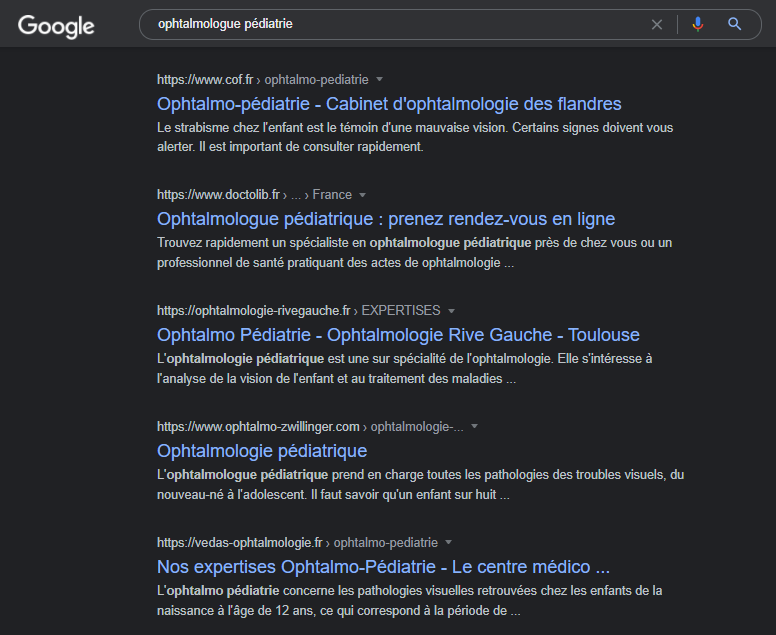
Whereas before Hummingbird, the search engine will simply show you content dealing with ophthalmology + pediatrics.
This ability to understand Google Hummingbird words and phrases means that the algorithms can also understand things in the real world and come to establish an interaction between them.
This revolution was possible thanks to semantic search and the update of Google Hummingbird for an interpretation of Internet users’ requests in specific circumstances.
2.4. RankBrain: The Brain of Google
Initially, Google created the RankBrain program to solve a major problem: How to effectively answer a poorly worded query or a new query that no user had searched for before and on which the search engine had so far not collected any information ?
It was in 2015 that Greg Corrado first revealed the existence of the RankBrain algorithm during an interview delivered to Bloomberg. Thescientist had implied that:
“RankBrain uses artificial intelligence to embed large amounts of written language into mathematical entities – called vectors – that the computer can understand. If RankBrain sees a word or phrase it is unfamiliar with, the machine can guess which words or phrases might have a similar meaning and filter the result accordingly, making it more efficient at handling search queries ever. seen before.”
You may not know it, but about 3.5 billion searches are performed every day on Google, or more than 40,000 queries processed by the search engine every second.
Of these daily queries, 15% are completely new, i.e. never searched by an Internet user before.
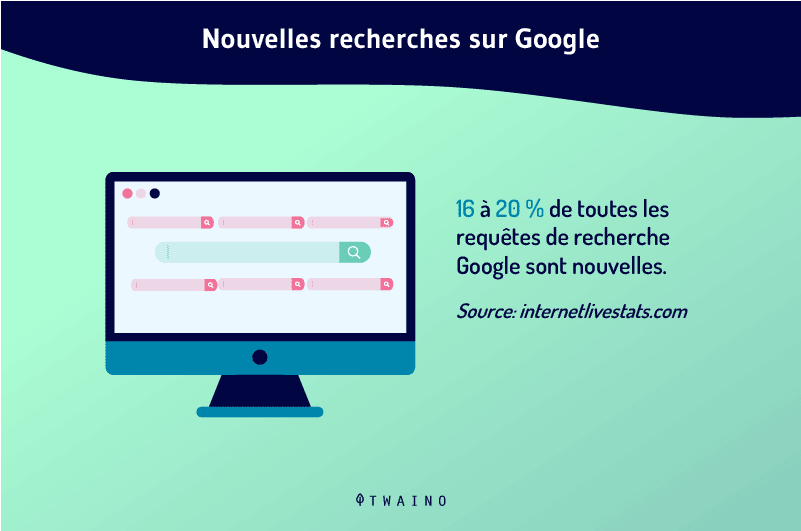
Consequence: The search engine is left without any previous analysis allowing it to determine whether the results it provides following these types of queries are really effective.
Of course, he could try to understand the new keywords in his own way, but the big question is whether the results offered really answer the question. user search intent.
He therefore developed an intelligent program to overcome the problem: this is where the Google RainBrain algorithm was born.
Featuring a machine learning system, RankBrain mimics human cognitive abilities to create and analyze user profiles to determine the most relevant type of content for a search.
Unsurprisingly, how RainBrain works has never been clearly described by Google. Nevertheless, there are speculations based on what is happening behind the scenes.
RainBrain uses advanced data processing techniques to analyze your search patterns, location, history, and how you interact with search results.
Simply put, after a search on Google, RankBrain determines what it thinks you will enjoy the most based on your past search activity. If basically many people like a certain page in the results, that page will be promoted in the search results ranking.
Otherwise, this page will lose its place in favor of a regularly consulted page. And to do this analysis, the algorithm particularly takes into account certain user experience signals such as:
- Organic click-through
- Session time
- Bounce rate
- To Pogo-sticking
illustrate all this, let’s imagine that after performing the latest update on your iPhone, you notice the presence of a “weak security” mention in the wifi settings of the phone.
Worried, you go to Google and then search for “weak wifi iphone security”:

Like the majority of Internet users, you choose to click on the first result and you come across a discussion forum where a user has posed the same problem, but the answers in comments did not really satisfy you.
You then click on the back button to leave the page and then click on the second result:
Source: Backlinko
Here too, you are still not satisfied with what you are reading. This is a page that explains how to set up routers and access points on an iPhone.
It’s not what you’re looking for, but you don’t despair. Then you leave this page again by clicking on the back button and then consult the 3rd result.
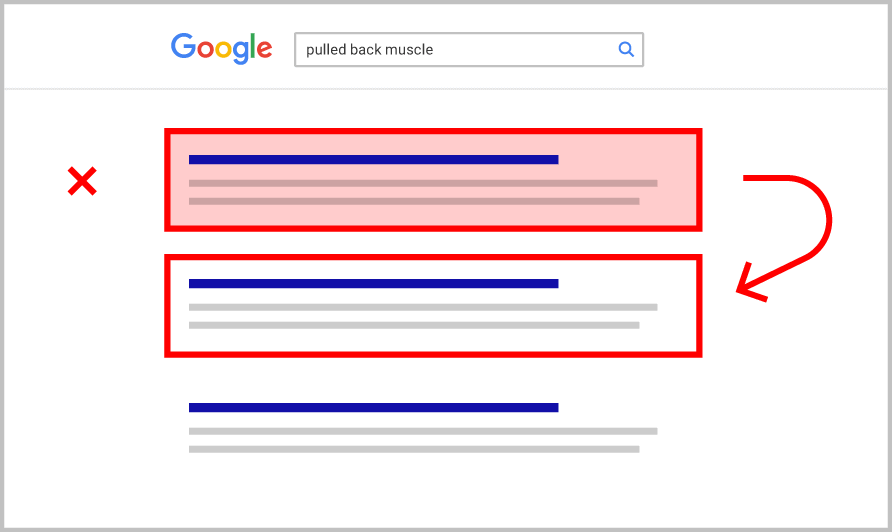
Source : Backlinko
Here too, you are still not satisfied with what you are reading. This is a page that explains how to set up routers and access points on an iPhone.
It’s not what you’re looking for, but you don’t despair. Then you leave this page again by clicking on the back button and then consult the 3rd result.
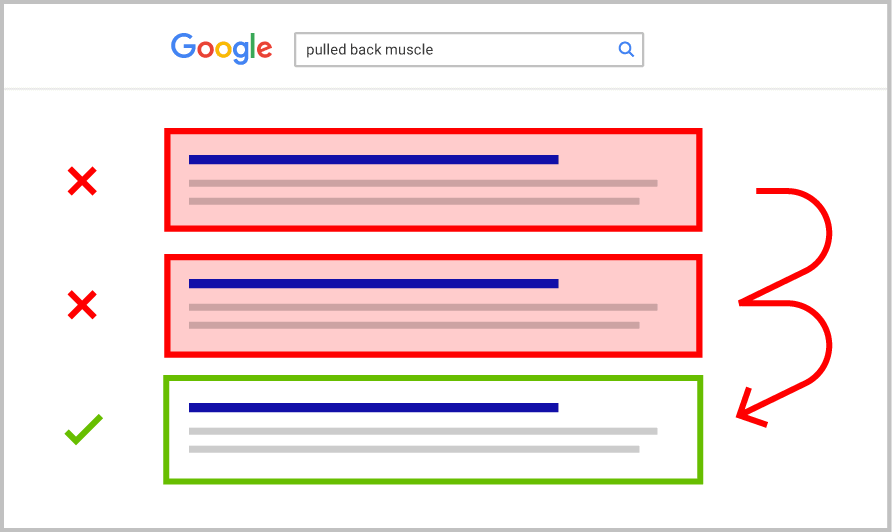
Source : Backlinko
And there bingo! This is an official Apple page that gives you the solution to your problem. And because this page addresses exactly what you were looking for, you spent 5 minutes reading it without hitting the back button again or visiting another page.
This little browsing history that you have just made is called in SEO jargon “pogo-sticking” and it is a factor that RainBrain attaches great importance to.
When Internet users quickly leave a page to consult another, Google understands that this first page is not reliable and will therefore cause it to lose its ranking.
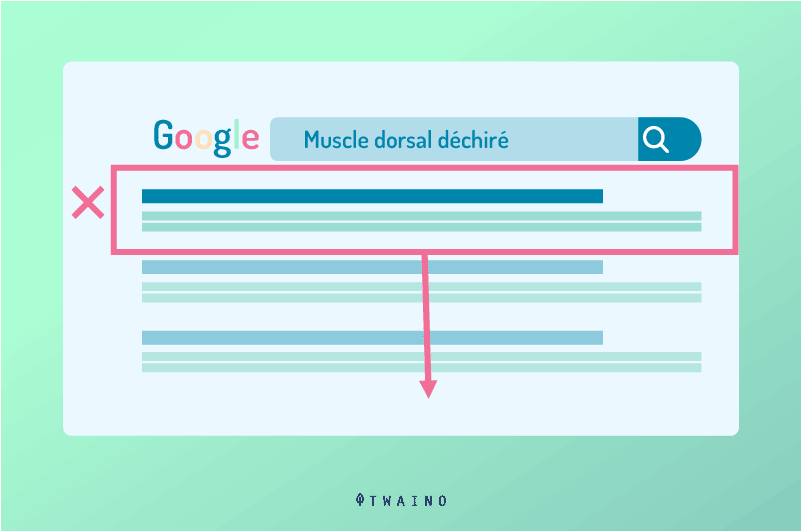
Conversely, when Google notices that several people complete a specific search history on a given page, then the engine improves the position of this page to make it easily accessible to Internet users.
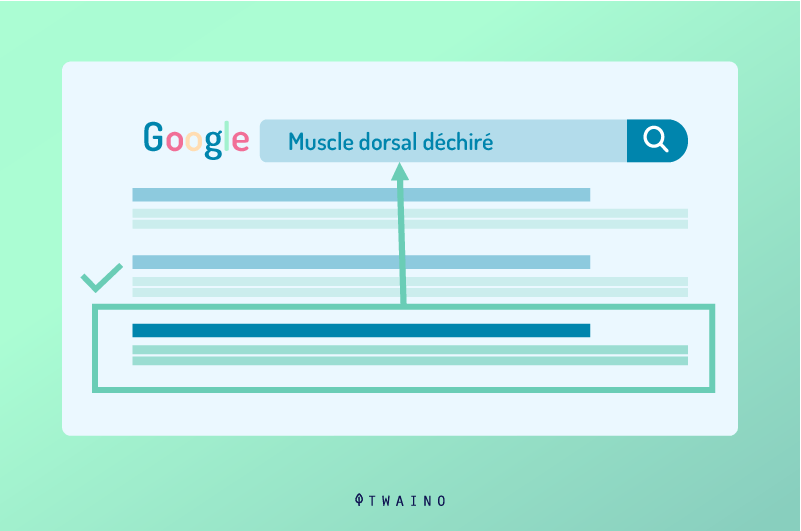
RainBrain uses this profiling to sort search results to choose those that are truly relevant to each user.
2.5. RainBrain and Hummingbird: A synergy for more relevant search results
By tracking users, Google RankBrain creates a vast database. It interprets the user’s purpose and intent in search queries, then sorts Hummingbird’s semantic search results to deliver the most appropriate content based on that knowledge.
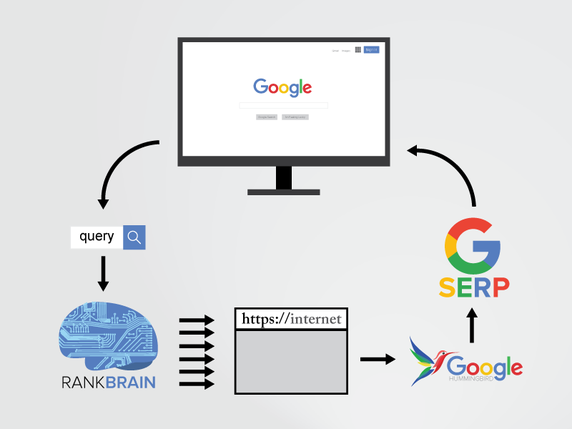
And since RainBrain is equipped with Artificial Intelligence, the more queries it processes, the more it learns and further improves its profiling accuracy for even more relevant results.
And this by repeating these three steps:
- The empirical data collected is used to understand how to make better response proposals;
- These suggested answers are tested and evaluated by RainBrain to decide their relevance;
- If the suggestions turn out to be accurate and efficient enough, RainBrain itself modifies its algorithm to be more efficient in future searches.
2.6. The advantages of RankBrain
There are several areas in which RankBrain has probably brought significant advantages:
- When a user launches a rather ambiguous query which could have several meanings, Google is able to contextualize the query well and answer it unequivocally .
- Users who search for uncommon and complicated keywords will have a better search experience. They are now more likely to find useful results quickly for their queries without having to search multiple times.
- Google said it uses around 200 ranking criteria before deciding whether a result is relevant to a user. RankBrain takes the third place among the 200 criteria and greatly influences the ranking of search results.
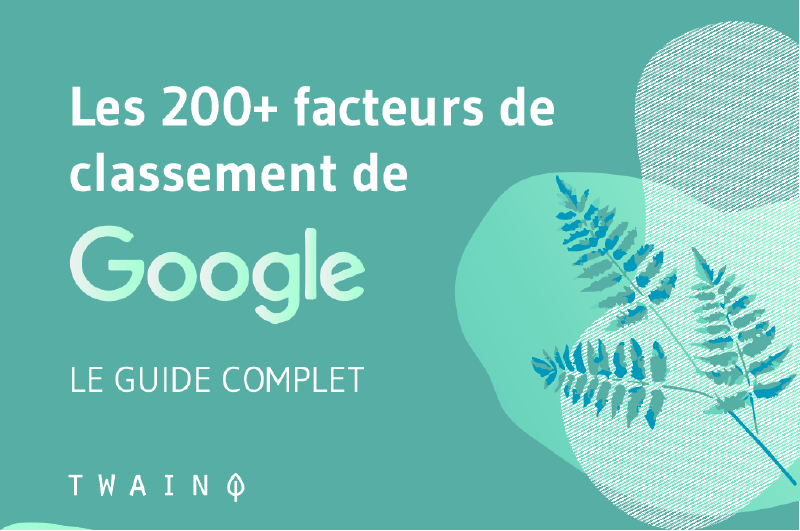
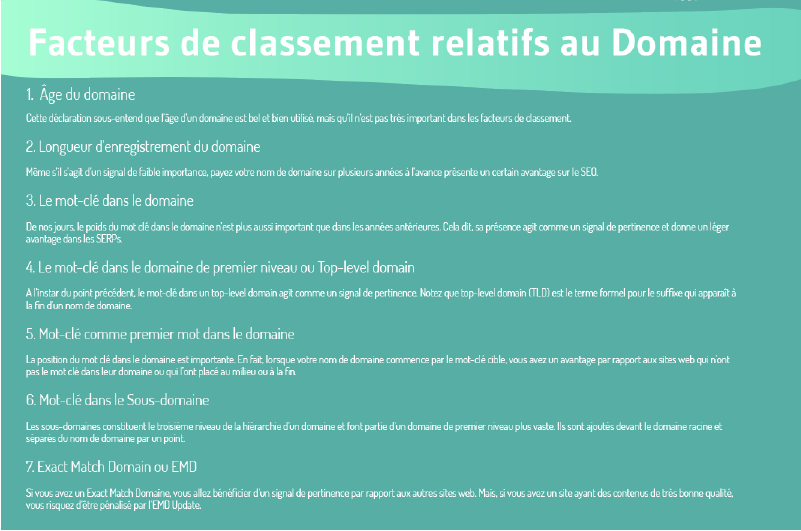
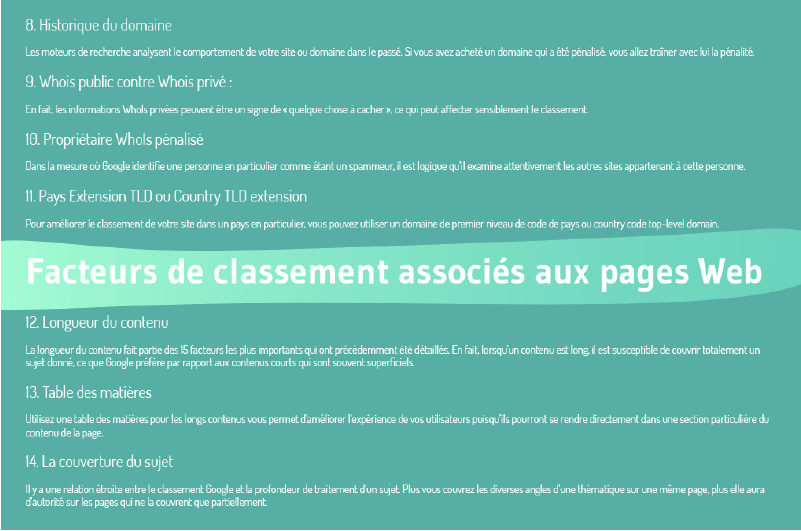
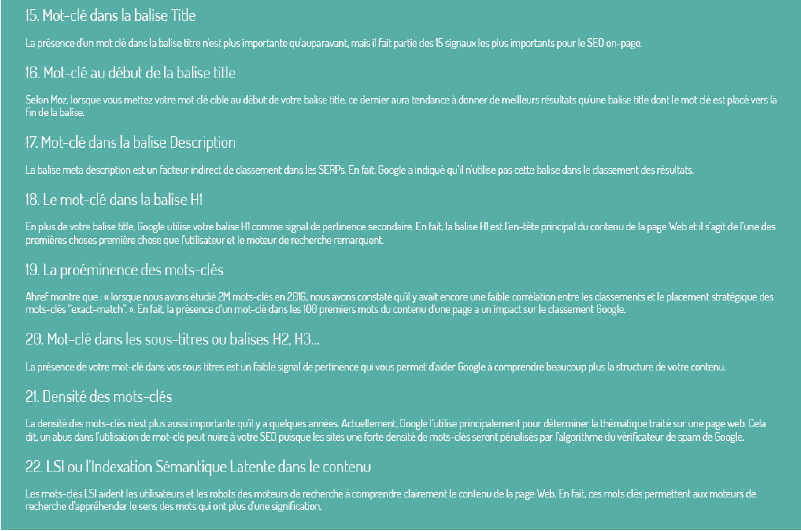
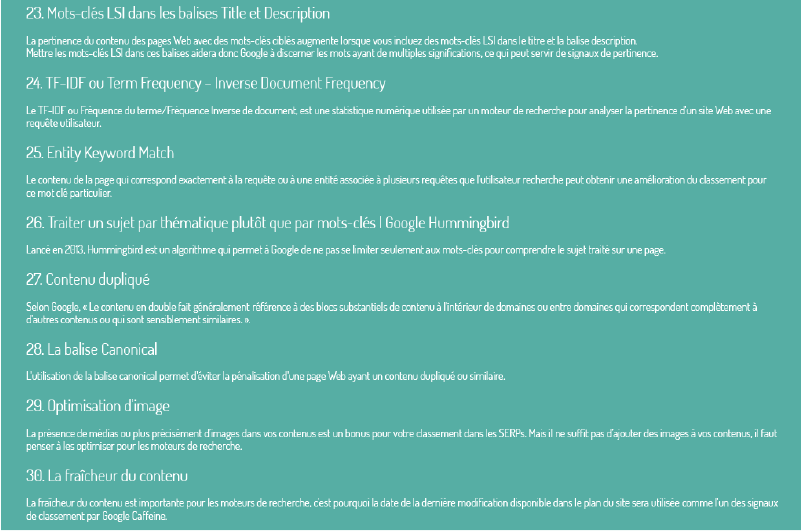
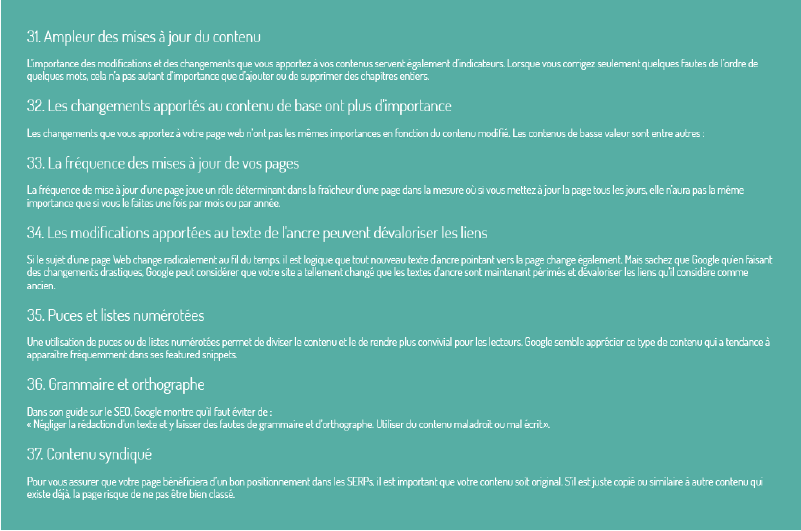
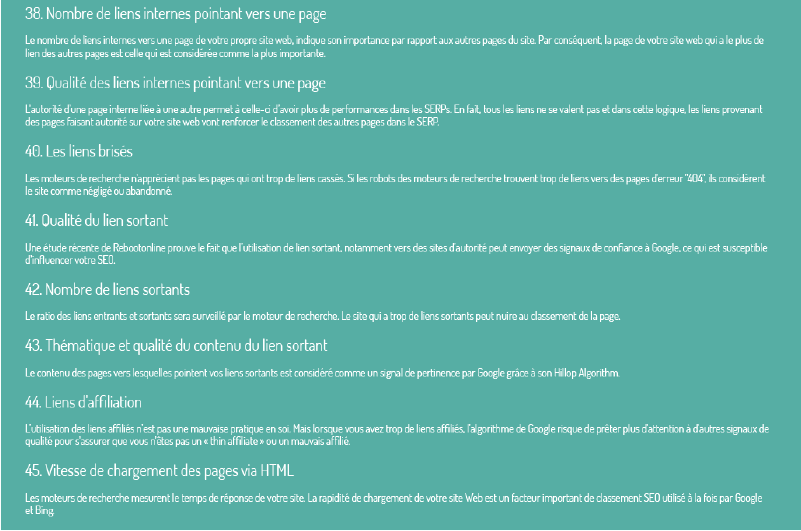
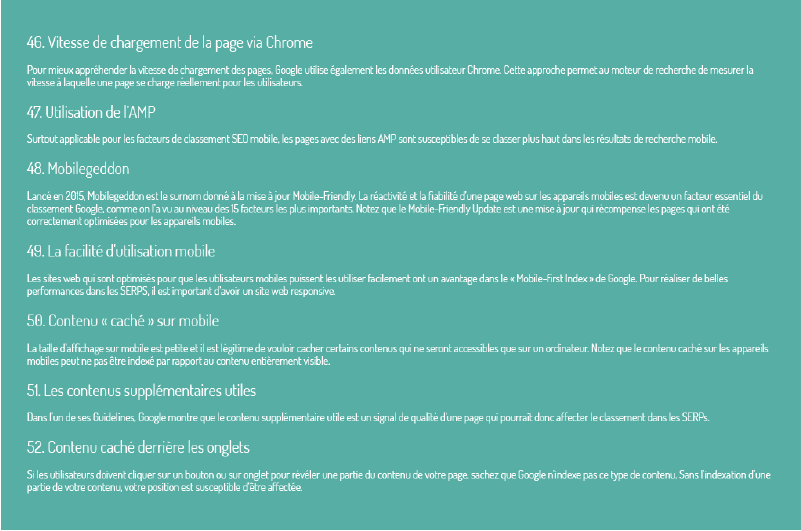
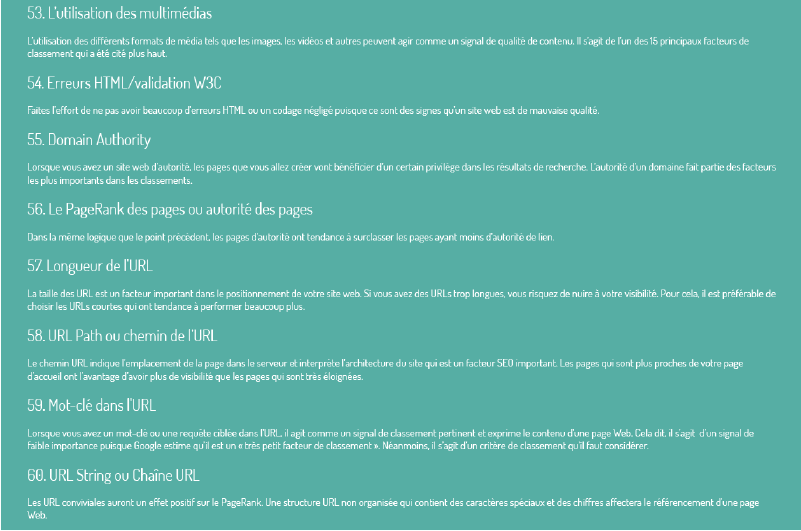
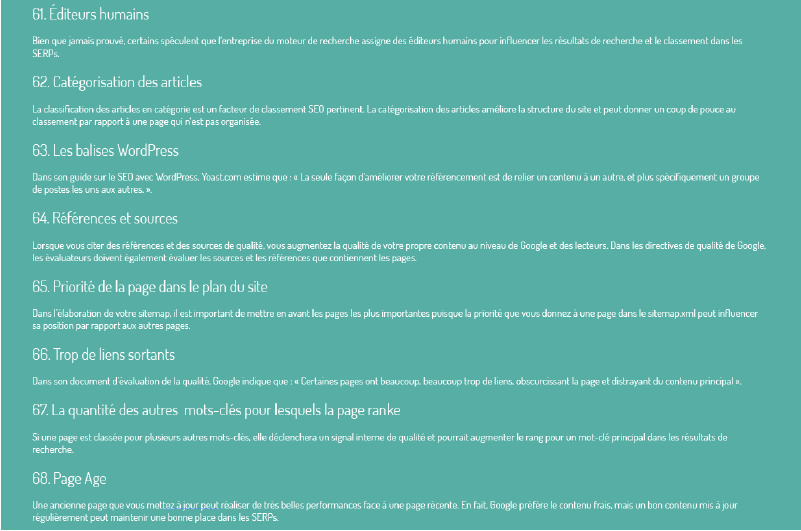
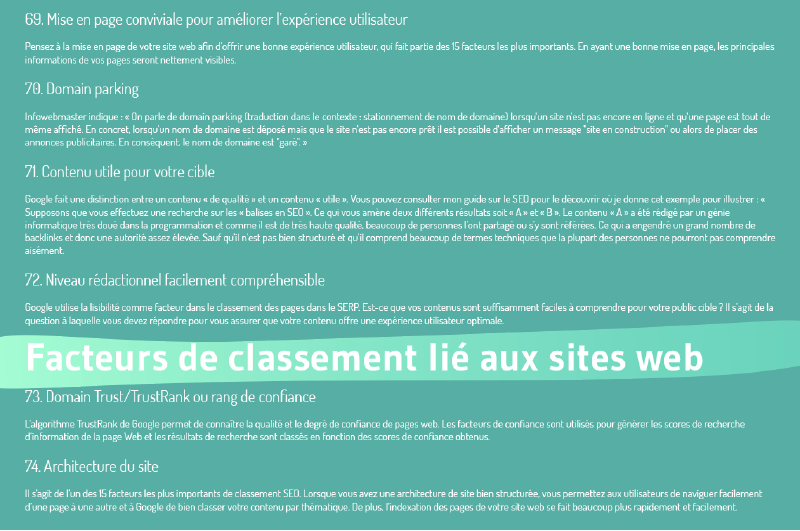
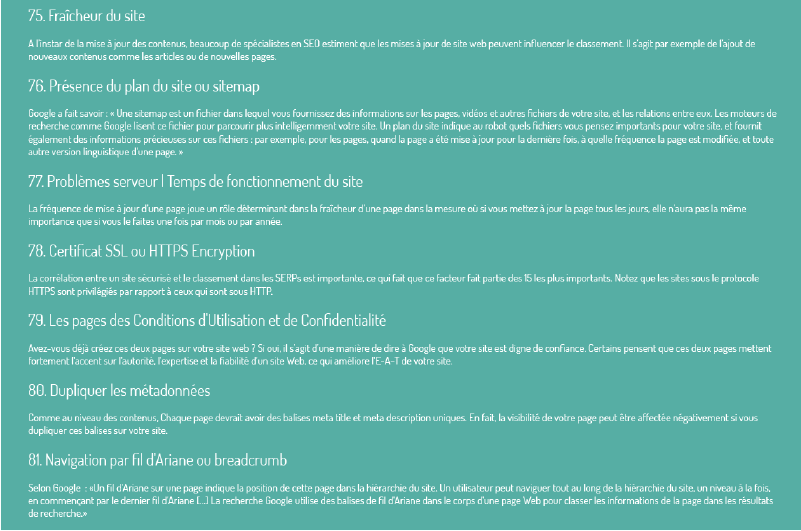
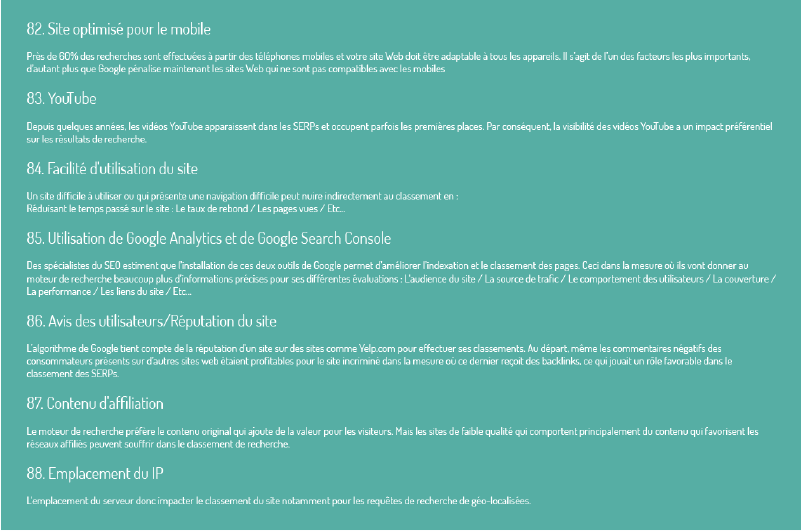
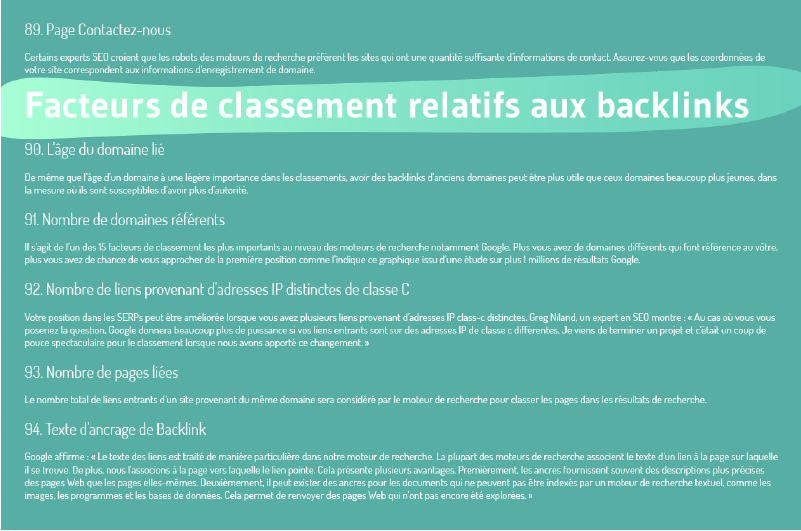
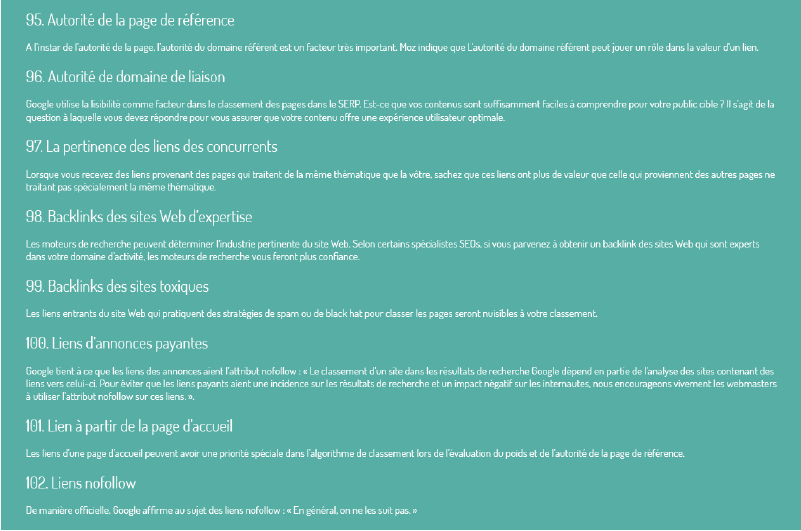
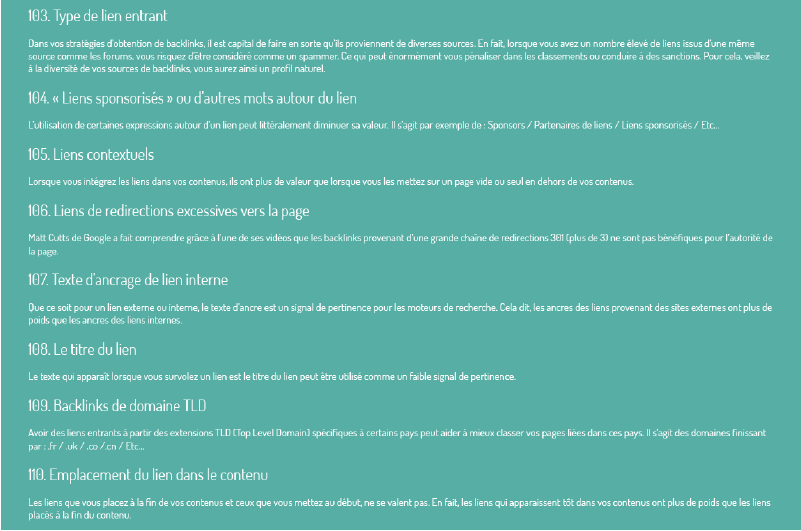
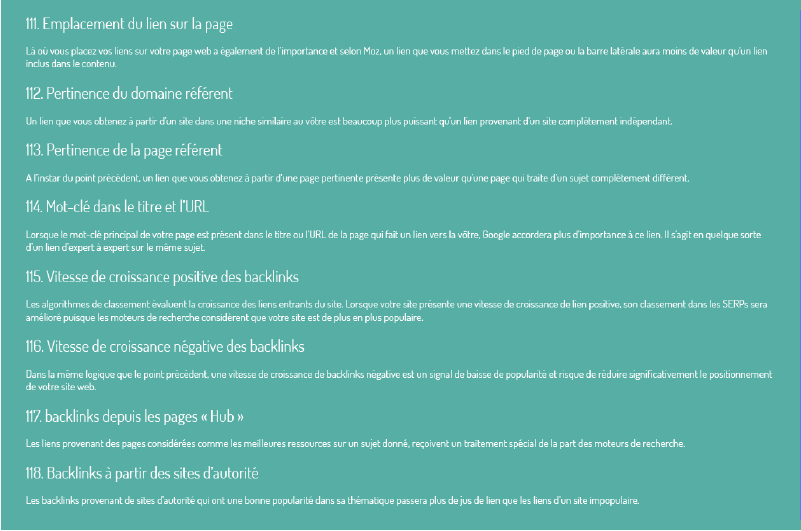
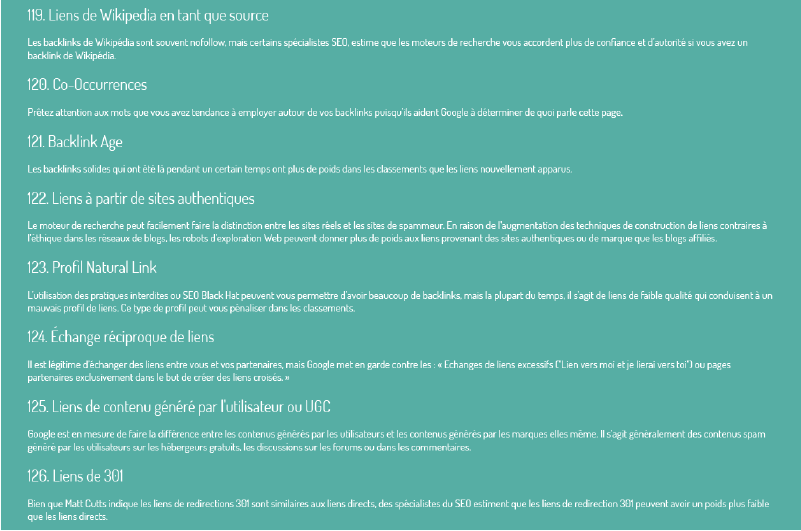
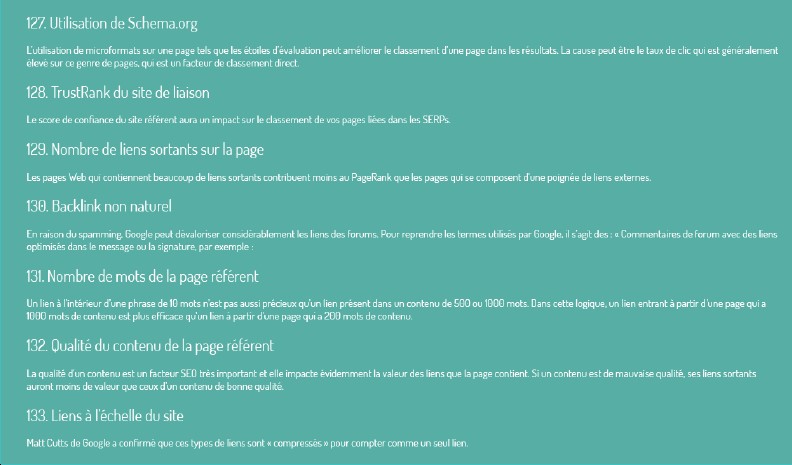
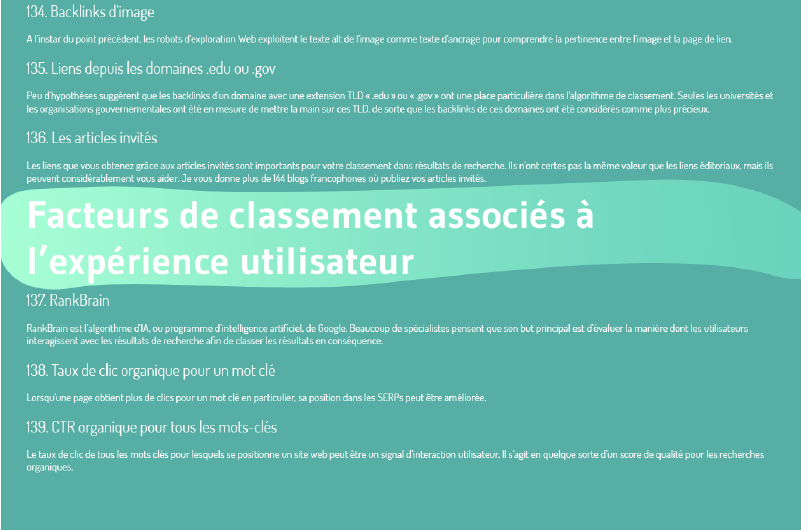
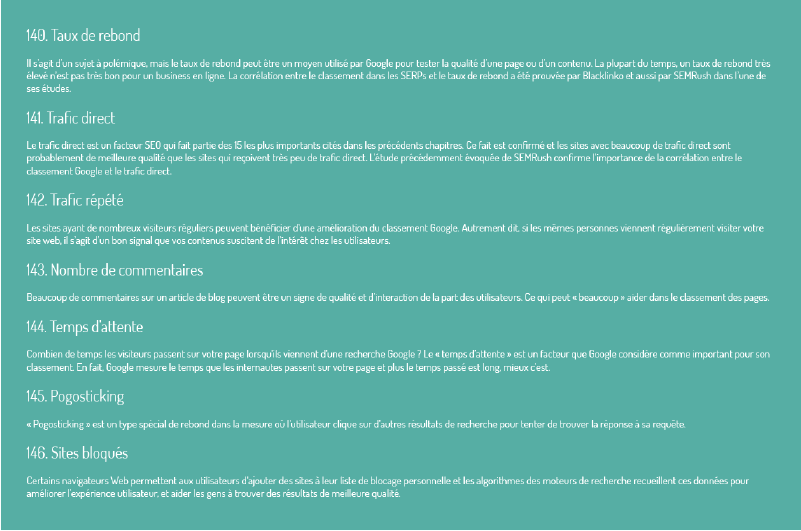
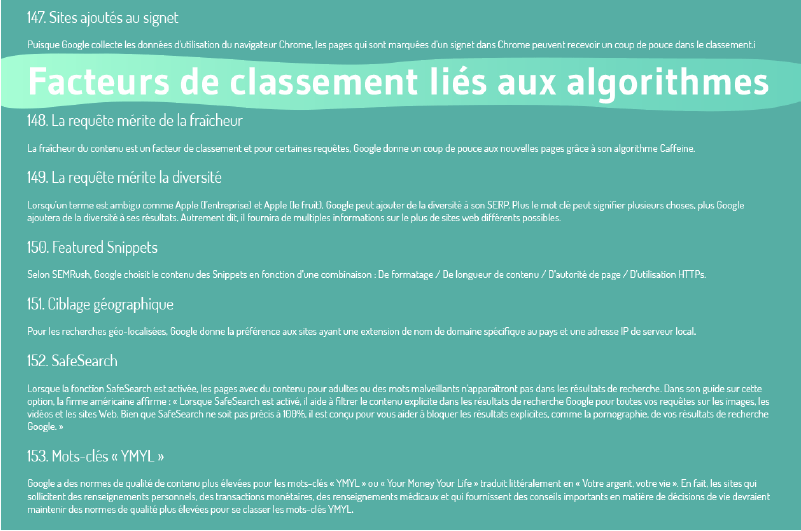
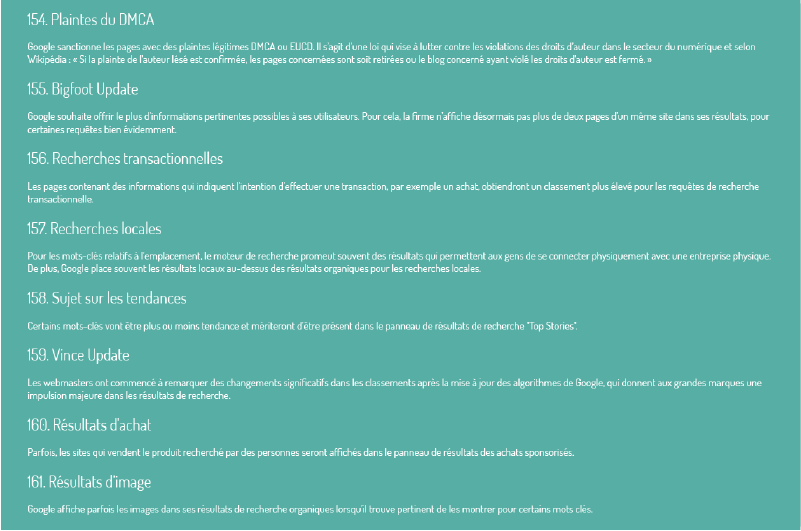
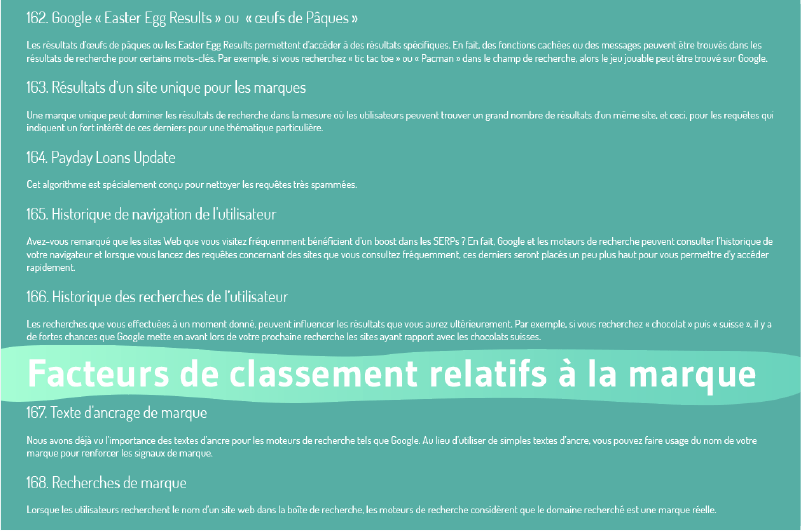
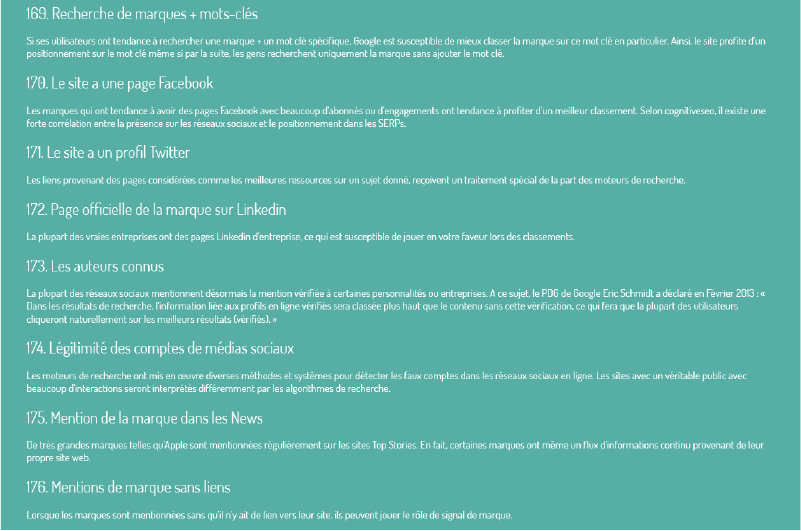
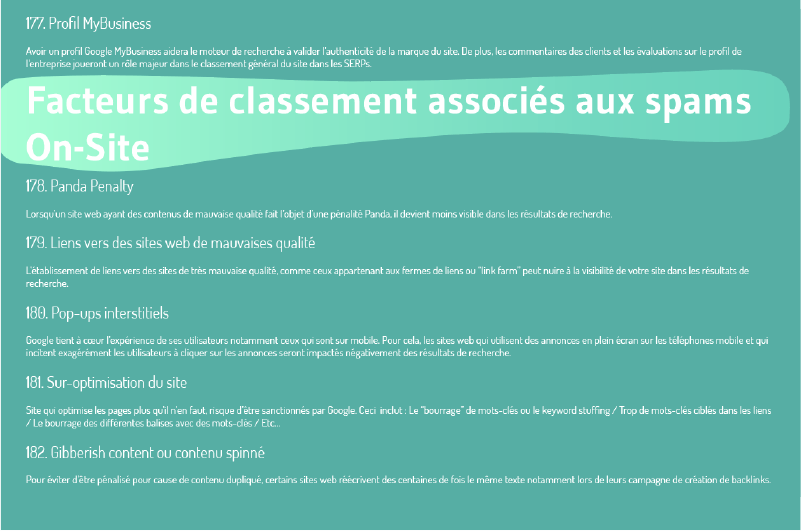
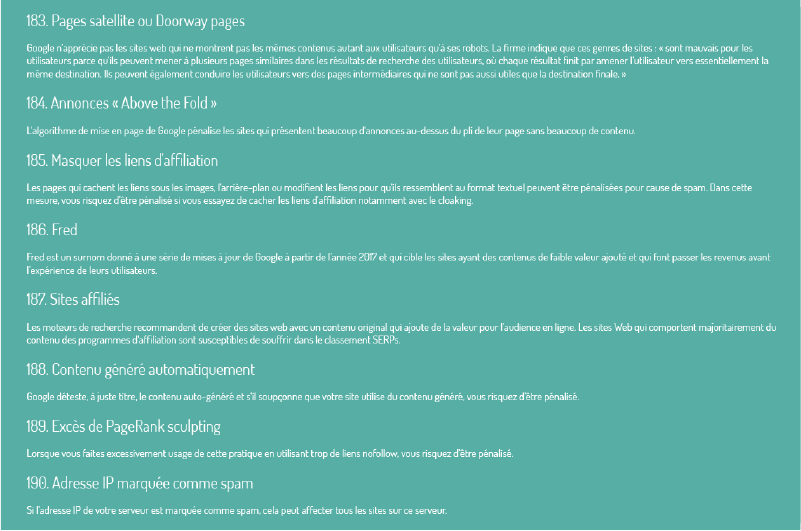
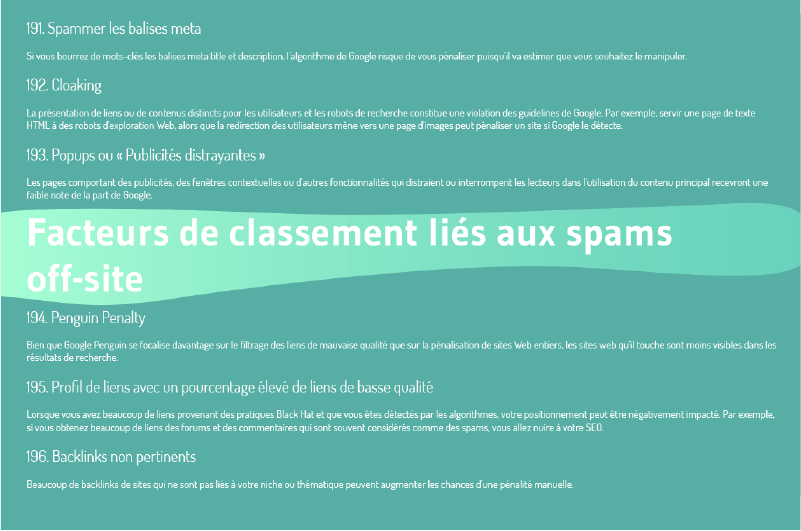
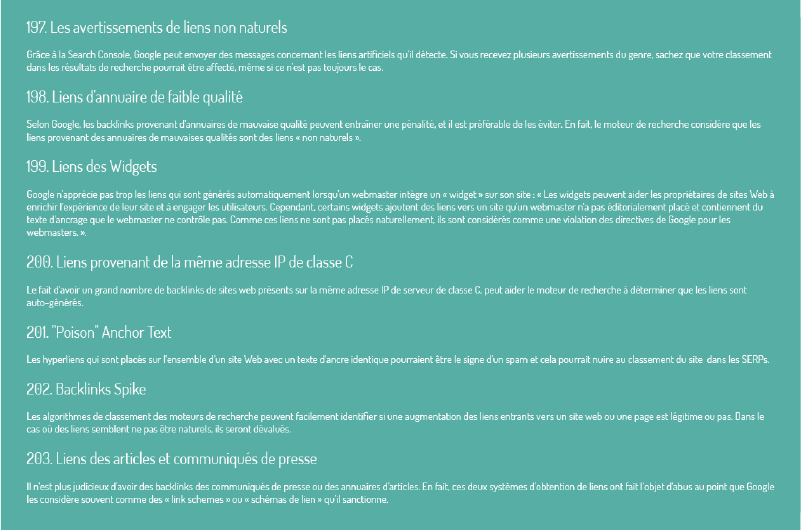
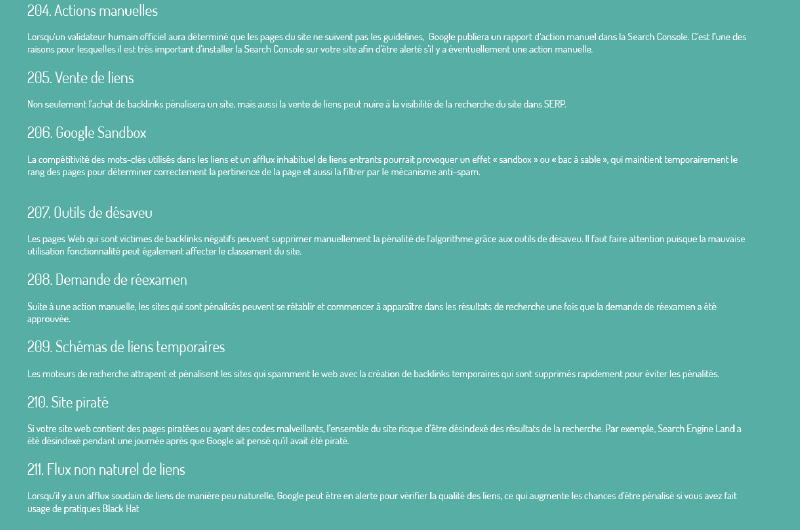
- When you search for a new phrase never searched before, Google is now able to answer you effectively.
- Rankbrain’s language comprehension capability should help simplify voice searches.
RankBrain managed to total 80% against 70% obtained by a team of engineers in a test aimed at evaluating what is most effective in determining the relevance of content. The algorithm has therefore succeeded in surpassing its own creators!
With such performance, Rankbrain should help improve voice search systems such as Siri, Google Now and Cortana.
2.7. How Google RankBrain Influences How We Do SEO
Depending on your SEO knowledge, RankBrain may require you to make relatively minor or major changes in your practices.
In the Pre-RankBrain era, SEOs relied heavily on link diversity, content depth, and keyword matching and you could tell it worked well.
Back then, it was common to target a single keyword on a page and create several more with each of the different keywords being targeted.
For example, you could target the keywords “best keyword research tools” and “best tool for keyword research” on different pages and each of them could be referenced for the targeted keyword.
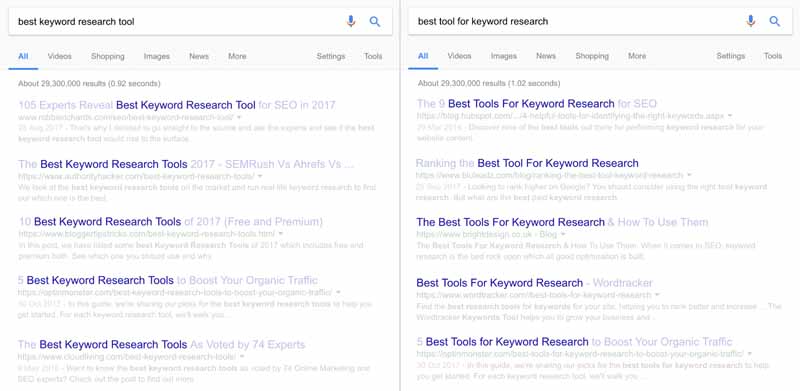
Source : Moz
But today, thanks to RankBrain, Google manages to understand that these keywords essentially mean the same thing and therefore offers almost similar results:
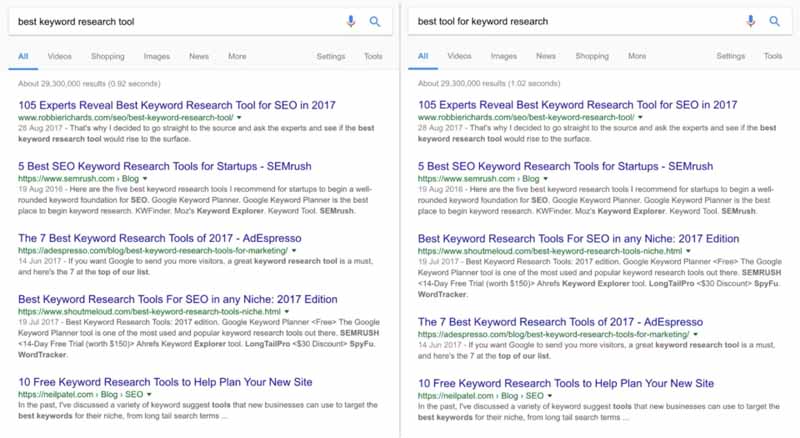
But it should be noted that even if RankBrain adapts the SEO strategy by learning more about user intent, this does not imply that SEO tactics are no longer effective, but rather that they need to be adapted.
Your old keyword-optimized content doesn’t consistently fall out of date as long as it meets user demand.
Clearly, RankBrain does not mean that SEO has become useless or that it is no longer worth putting SEO efforts on your site.
It simply implies that you need to focus more on creating great content that actually meets people’s needs than on optimizing a page around a specific keyword.
Put simply, RankBrain reduces the importance of keyword matching and prioritizes content value, so you give the user the information they’re looking for.
2.8. BERT vs Rankbrain
BERT is the biggest algorithm change made by Google since the release of RainBrain. It was rolled out in 2019 and brought a massive change in Google search result rankings.

BERT is short for Bidirectional Encoder Representations from Transformers. The name “Bidirectional Encoder Representations from Transformers” means that data is captured and encoded in both directions (bidirectionally).
As for the idea behind “Encoder”, it means a unit of lossy compression algorithms or mathematical equations to estimate or infer values, such as hidden parameters, events or states.
Of course, all this may seem a little complex to you to understand, but basically it is to say that Google BERT can analyze the words that make up a query simultaneously in both directions.
Before BERT, i.e. with RainBrain, Google analyzed the order of words in a single direction, either from left to right or vice versa.
But since the BERT update, the search engine examines a query simultaneously in both directions. This strengthens Google’s ability to understand the intent behind user search and consistently deliver the most relevant content.
What then becomes of Google RankBrain? Will the algorithm be replaced by BERT? Well no.
BERT does not replace RanBrain, but rather complements it. The search engine uses several methods to understand the queries of its users. So depending on the type of request, BERT can sometimes be requested alone or sometimes in combination with RainBrain.
Google still uses RainBrain to process queries, but when it feels the usefulness of BERT to understand a specific query, it can still use it.
2.9. How to optimize for RankBrain?
It is clear that RankBrain will keep its important position in Google’s algorithms for a long time.
And while it may change over time, AI and machine learning are here to stay in the search engine ecosystem for a long time.
Here is a list of recommendations that you can apply to better optimize your content for RankBrain:
2.9.1. Use a conversational tone in your content
When you create your content, use a natural tone that you could also use orally. For better success, you can read the content aloud while developing it to check if the style used is truly conversational.
It’s a writing style that can have a significant impact on RankBrain’s ability to understand your content.
2.9.2. Keeping search intent in sight
With the latest updates from Google’s algorithm, a good content creation strategy needs to be sufficiently focused on the user’s search intent.

And to make sure you understand the search intent behind a keyword, you can simulate a search for this word on Google and browse the first pages offered by the search engine.
These are likely to be the pages that managed to understand the intent behind the query and offered relevant content that effectively addresses it. So you can take inspiration from this content and come up with something more competitive.
2.9.3. Add relevance to your content
Once you are certain of the intent of a keyword, you will need to produce your content and optimize it to match that intent.
And to successfully complete this step, make the effort to forget the notion of “keyword” and SEO techniques for a while. Consider each page a bit like a “theme” and provide all the useful information that could be of interest to the Internet user to make the page as complete as possible.
Before, you may have had the habit of splitting each theme into several terms that you develop separately on different pages to hope to be referenced for each of the targeted keywords.
But now, it is more recommended to develop a theme entirely on one page and this single page will be able to rank on Google for several other keywords.
The fact is that when you delve deeper into a topic, you naturally address all possible variations of the subject in the content.
Google will appreciate this effort, the page will be referenced for several keywords, which will increase its visibility and authority on the search results pages.
Here is a typical example that illustrates this well. This is a website whose first two pages have managed to rank on Google for thousands of keywords.

Imagine if your pages could also rank on Google for thousands of keywords. That would be great. But even if these two pages must have probably taken a long time to reach this performance, it is already good news that it is possible.
And to get there, nothing very difficult, the main thing is to remain as complete as possible in your content. Suppose you want to create content on “How or a PDF file?” “.
You could for example include in this article, chapters like:
- How to open a PDF file on PC (MAC and Windows);
- How to open a PDF file on phone (iPhone and Android);
- What are the best PDF reader software;
- How to open a PDF document without installing software;
- What are the common errors that can prevent a PDF document from being read?
- How to solve a problem reading a PDF file?
Developing all of these aspects of the main topic will allow you to create great content that will address all the concerns of opening a PDF file with the ability to rank on Google on multiple keywords.
To help you create this type of in-depth content, here are some questions you should ask yourself when writing:
- Who is my target audience and what are they looking for?
- What is the intent of my target audience?
- Does he want information or a solution?
Don’t forget to support your development with statistics or factual examples.
This ability to back up your claims with reliable outside sources will prove your expertise, which is sure to increase your brand’s authority in your niche and your audience’s trust. Also, don’t be repetitive lest you bore the reader.
2.9.4. Improve click-through rate
Since RankBrain also takes the number of clicks into account, writing catchy title tags and meta descriptions can get you clicks and improve your page rankings in search results.
And to achieve this, one of the most effective means is to succeed in creating titles that arouse emotion among Internet users. This is an effective trick that can bring you enough clicks and even sales.
A study conducted on Internet users’ purchasing decisions revealed that they are 20% influenced by logic and 80% by emotions.

You can also insert your brand name, use numbers, brackets or parentheses in your title to stand out from other pages ranked on the SERP.
To increase your luck, you can also take inspiration from the titles of the first sponsored or organic pages.
These are well-optimized pages that have seduced Google’s algorithms to deserve this good position that you can also imitate.
2.9.5. Prioritize the quality of your content over the quantity
We have already covered this a little more in one of the previous sections. If you want to stay effective, you need to change your old SEO practices, including content creation and keyword strategy.
If you’ve spent as much time in SEO as I have, you’ll need to adapt your thinking around content and keyword strategy.
This period when you could write content around a single keyword is now over and the technique no longer works with RankBrain.
Instead of creating different content for example “How to lose weight” and “How to lose weight”, focus on a single qualitative content because the search engine now understands that it is the same search intention and will therefore offer similar results for the 2 queries:
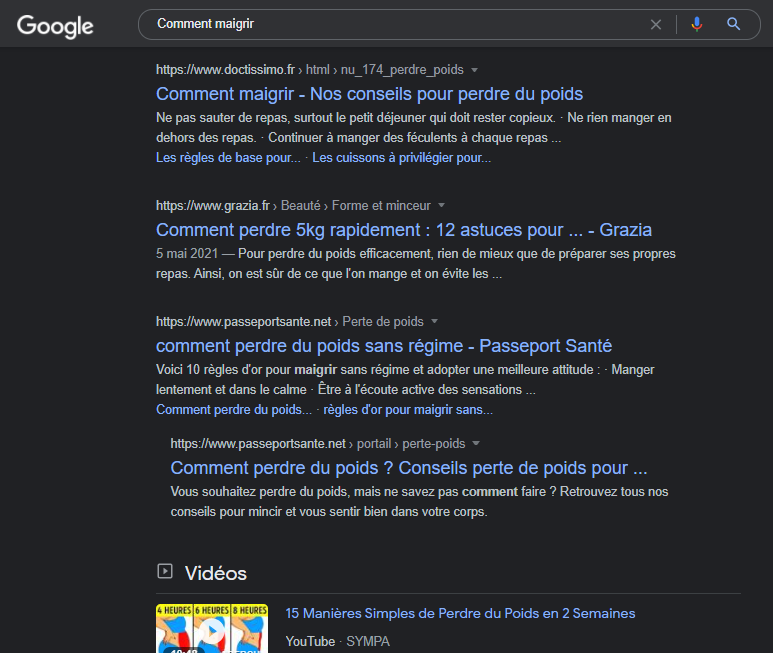

As we can see, it is almost the same pages that are offered by Google to answer the two different queries.
Clearly, this would mean that RankBrain favors the creation of rich and voluminous content that can be optimized around several keywords rather than creating several optimized contents around one keyword each.
2.9.6. Improving UX signals to increase the session duration of your content
We already know that to assess the relevance of the results that Google offers to its users, RankBrain analyzes several UX factors, including session duration and pogo-sticking to determine the level commitment that each of the pages receives from Internet users.
When a page receives more engagements, its position on the SERP is improved and ranked even higher, otherwise it will be downgraded.
Here are some practices that you can observe to improve the UX signals of your content and obtain more engagement with your audience:
- Air out your content, the blocks of text to have small, easy-to-read paragraphs;
- Create fairly catchy introductions that do not reveal everything to the reader at the same time to make them want to continue reading the content to find out more;
- Insert images and videos into your content to enhance your content, but also to make it even easier to understand.
- A person generally takes 1 to 10 seconds maximum to understand an image, while it will take him an average of 60 seconds to read a short extract of 200 to 250 words.
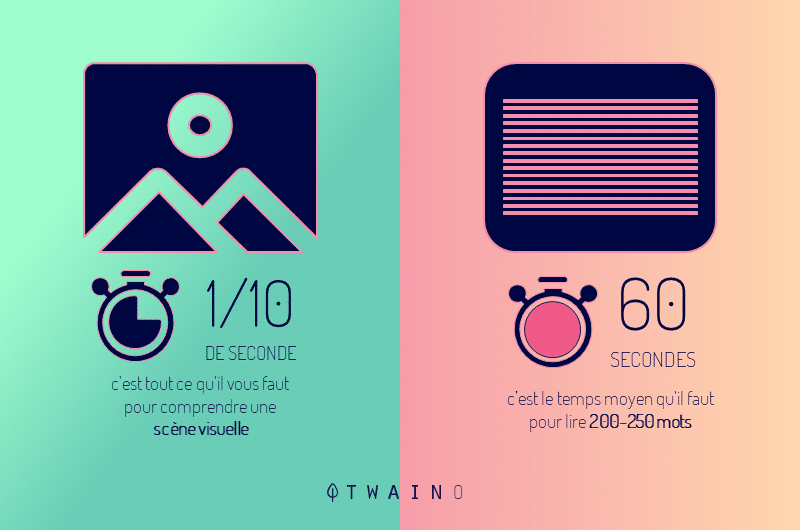
- Use the pyramid method and answer the important questions for the Internet user at the very beginning of the content.
- Create content that addresses all the possible questions that the Internet user may have on the subject.
The idea is to combine all the chances with your content so that it maintains the Internet user long enough to score points in the eyes of RankBrain. The more time the user spends on your page, the more favorable your UX signal scores will be.
2.9.7. Improving your old content
If your website is relatively new, you may have outdated content that was optimized before RankBrain.
You may also have a number of different, thematically relevant articles that would be best put together for one long article.
If so, figure out which post has the most traffic, backlinks, and rankings and make that your main content. Then, merge the others into a single “optimized for RankBrain” article and set up redirects to redirect your old content to the new one.
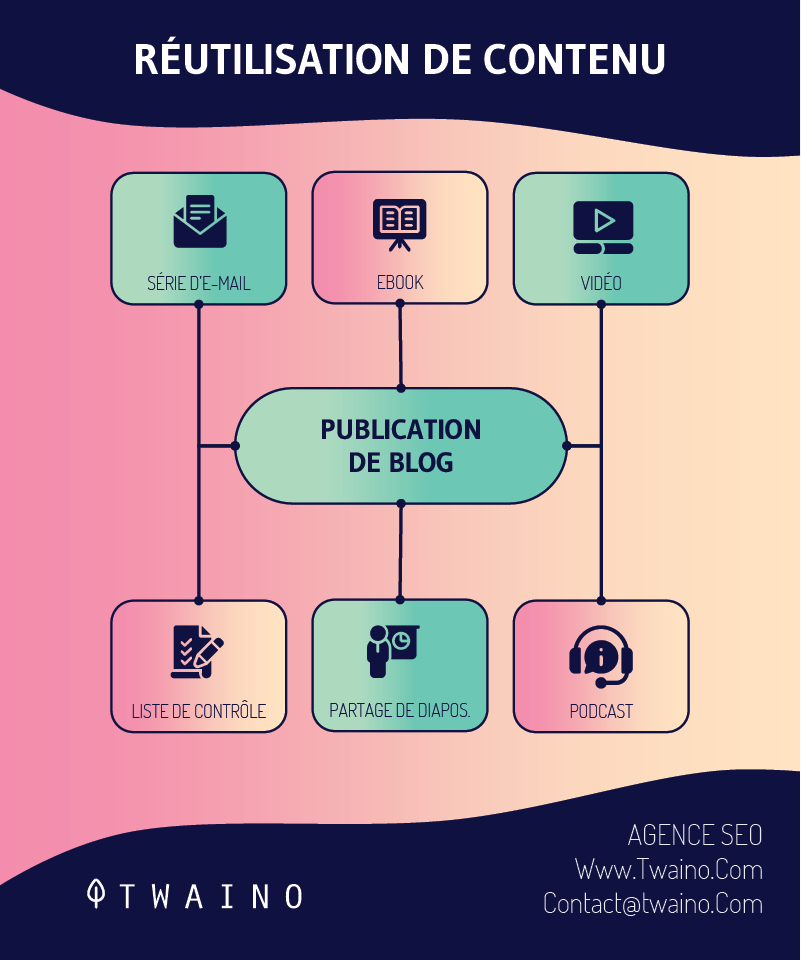
This strategy is a great opportunity to provide a better user experience and help your pages rank on search results pages.
2.9.8. Organize your content according to the clustering
Clustering model is a process of dividing data into groups or clusters to better understand the similarities and differences between the data. Clustering can be used to identify patterns and relationships in data, as well as to find subgroups within a larger group.
In SEO, clustering is used by search engines to categorize a site or a web page into “clusters”, that is to say by theme.
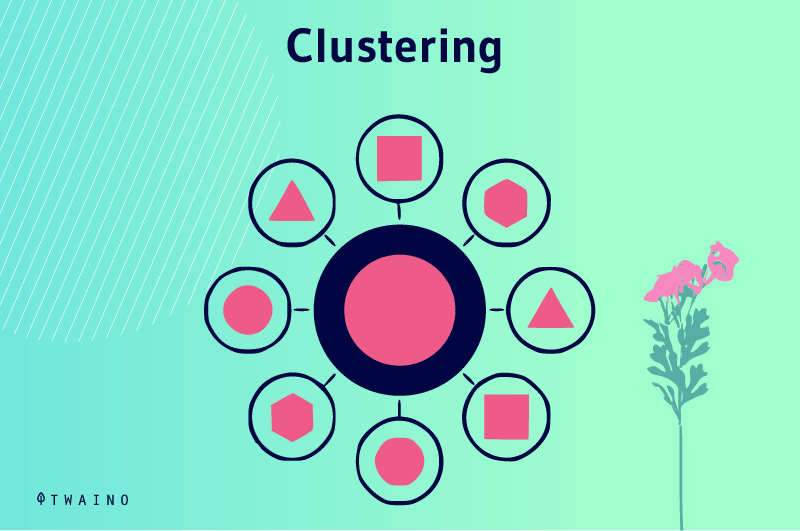
The idea of such a data organization is to build sets of web pages sharing the same subject or addressing complementary themes on this subject.
For marketers, the clustering model allows for a more efficient and relevant construction and organization of content.
It allows Internet users to quickly find the information they are looking for on the same site, as well as other additional and useful information that may also be of interest to them.
To set up a clustering strategy:
- Find a theme and sub-topics
On the site of my agency Twaino for example, this is also the clustering method that I use to organize my articles.
And one of my themes is “Marketing” with sub-topics like:
- How to build a successful career in digital marketing?
- Google Data Studio: The Complete Guide
- Clubhouse – The new elitist 100% audio chat application that is driving the web crazy
- How to use videos in your branding strategy?
- Affiliation: The complete guide
- Etc.
- Create a pillar page then proceed to optimize its content: It can be a pillar page of the “How” type or of the “Summary” type.
- Write your cluster or satellite articles: If you already have existing articles on your site, you will need to carry out an audit and list the content that is related to your initial theme. Otherwise, you will have to create new ones.
Link the contents: Here, the work will be to link the articles of a pillar page to each other thanks to an internal mesh network.
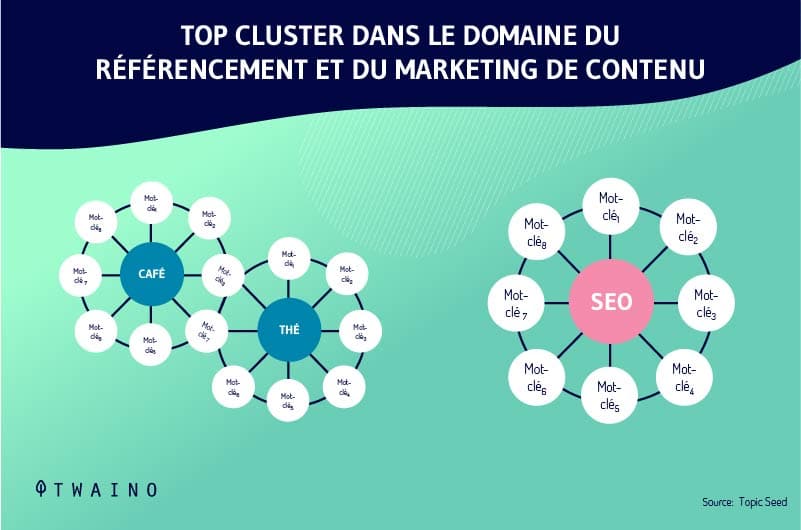
This content organization model makes your content easily accessible to visitors, but also to Google crawlers for better indexing.
2.9.9. Offer a mobile-friendly site
Not thinking about your site’s responsiveness to mobile phones is a big SEO mistake since search engines are placing more emphasis on mobile searches.
That’s why it’s so important to improve your website’s navigation for mobile devices. And one of the weight factors that affect browsing quality on smartphones is page load times.
Generally, an Internet user who uses his telephone to connect is looking for information quickly.
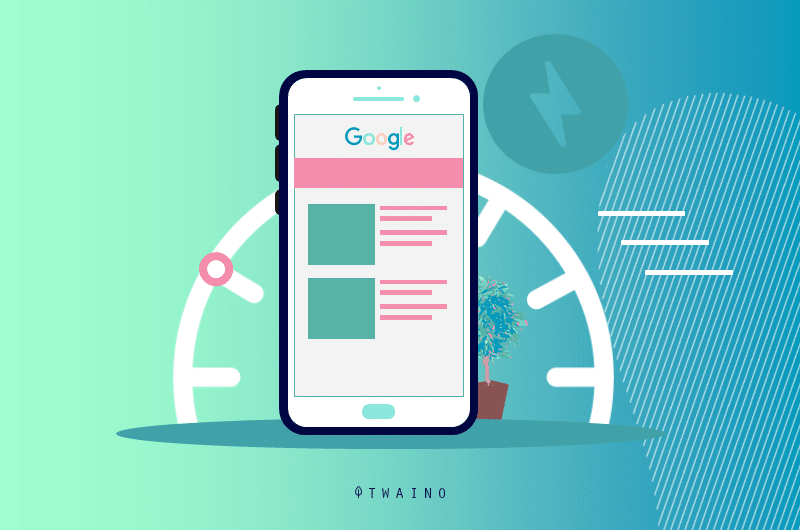
This is why your site must load quickly to facilitate navigation for the Internet user.
There are several optimization techniques to offer a mobile-friendly site to your visitors such as:
- A responsive theme;
- A simplified menu;
- Compressed images;
- Airy text blocks;
- Etc.
2.9.10. Don’t Forget Local
SEO Local SEO is a specialty of SEO that involves optimizing a website for a local audience.
This includes optimizing the website for specific keywords and phrases that people in your area are likely to use when searching for businesses like yours.

Additionally, voice search is affected by local SEO. Users are indeed more likely to ask questions like “Where can I buy milk near me?” when using voice assistance.
Therefore, geotagged keywords with question words in your content could be just as important for your ranking on Google.
To implement a local SEO strategy, you can:
- Claim and optimize your Google My Business listing;
- Optimize your GMB listing and website for mobile devices;
- Create a landing page for each location in your business;
- Include geographical terms in the meta descriptions of your pages;
- Have a correct and visible NAP (Name, Address, Phone number);
- Collect customer reviews;
- Create links from local directories relevant to your niche;
- Etc.
To strengthen your local SEO strategy, you can also create a “Frequently Asked Questions” (FAQ) page that will be built and optimized to meet the needs of voice assistants.
2.9.11. Encourage Audience Engagement
Customers may be critical to your business’s online reputation, but they can also impact your website’s ranking in search results.
Of course, many internet users read reviews about a company or product before buying anything, and these reviews are a real benefit for the brand.
But it is also a real asset for your SEO in the sense that the words used in customer reviews will also be sought by other Internet users, since they were written by real people and not by an artificial intelligence.

Additionally, natural conversations written in customer reviews can rank your site for local search. This is why encouraging your consumers to give their opinion is a good idea as it will lead to more positive reviews for your business.
2.9.12. Promote the sharing of your content
Sharing content is one of the most effective ways to improve the notoriety and reputation of a brand on the Net.
And social networks remain an excellent space to share your content and arouse the interest of a new audience. This is a positive sign for your site with Google.
Depending on your niche, you can choose the most appropriate type of network, but usually Facebook, Twitter and LinkedIn are the platforms most used by companies to develop a community on social networks.

You can therefore start your campaigns on these networks, especially if you operate in the e-commerce sector.
On Instagram and even Twitter, you can meet influencers with whom collaborations could get you notoriety much faster than you would have hoped.
It must be said that Google has always advocated a good experience for users. Even with the progress that Artificial Intelligence brings to its algorithms, the search engine remains faithful to this vision and is constantly looking for new solutions to meet user expectations.
And for a winning SEO optimization strategy, it is precisely the satisfaction of your audience that you must take precedence above all.
The secret to modern SEO in an era where Google is getting smarter is a combination of keyword matching alongside search intent matching for relevant, quality content.
2.10. Is technical SEO dead?
The answer is no, technical SEO strategies are still effective and current. It is true that the contribution of AI and machine learning drastically reduces the time and resources required for technical SEO, as it now requires less human interaction.
But the different practices in themselves will always be effective. In the future, technical SEO tools like Google Search Console may work with machine learning technology, which will limit human intervention.
But remember that machine learning and artificial intelligence are not meant to replace SEOs.
The proof, there are many software and platform providers who develop technologies and programs adapted to SEO, while respecting the same SEO practices.

These tools can save you time by automating certain technical SEO tasks such as:
- Keyword research
- Various technical audits
- Content optimization Content
- distribution
- Internal linking
With the contribution of artificial intelligence, the Technical SEO will take less of your time, which means a more flexible schedule that you can devote to content creation.
2.3. List of the last major Google algorithm updates
Here is a summary of the changes made to Google’s algorithms over the past ten years, as well as an overview of what each one means for webmasters and Internet users. to see how Google has gradually integrated AI into its ecosystem :
2.3.1. Update of Caffeine, the Google index (2010)
indexing system Caffeine. The goal of this update was to improve search results for users and help website owners see their content faster.
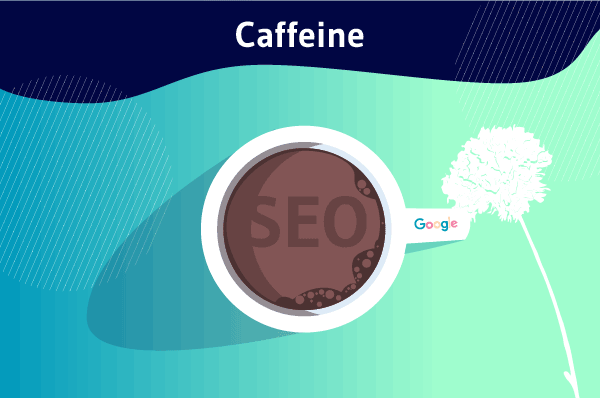
The introduction of Caffeine has helped Google crawl and store data more efficiently. The search engine itself had acknowledged that: “Caffeine provides 50% fresher results for web searches than our last index, and it’s the largest collection of web content we’ve offered.”
This change is part of a larger goal to speed up the Internet and meet the needs of a rapidly growing Web. As a result, Google announced around the same time that site speed would become a Google ranking signal, to go along with this larger goal.
Impact of the Caffeine update on SEO:
The Caffeine Index update, while not including new ranking criteria, was part of Google’s “Speed Up the Internet” initiative to make desktop site speed a new ranking signal and highlight the importance of website performance.
Basically, Caffeine improved the user experience by allowing Google to index more web content.
2.3.2. The Panda Update (2011)
As part of Google’s goal of providing users with high-quality information, the Panda Update included a new ranking signal that penalizes link farming and stuffing. keywords.
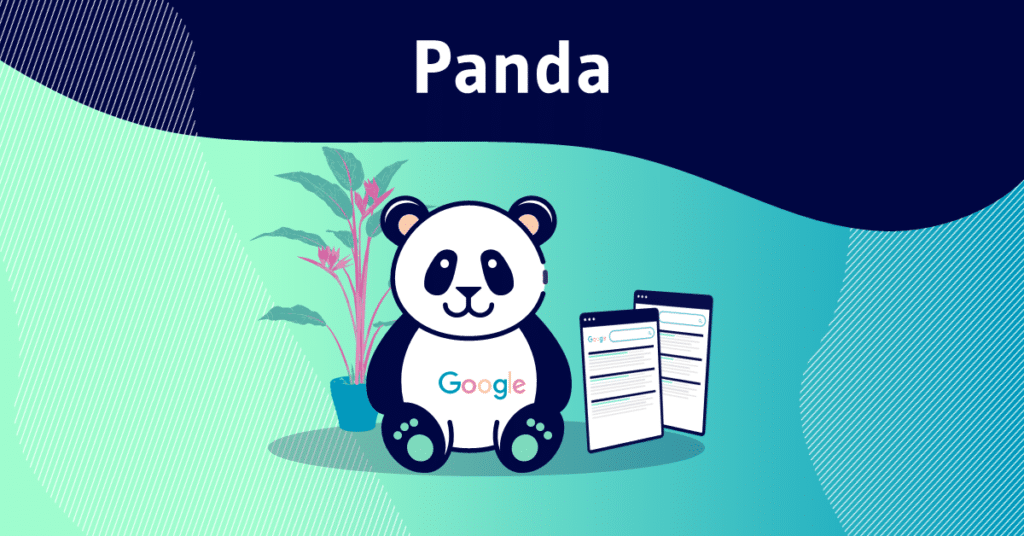
This improves search results by identifying low-quality content and spam, which are then removed from top rankings.
Impact of the Panda update on SEO:
Many players in the SEO community had to change their SEO strategies. Keyword stuffing, for example, was no longer effective, and SEOs had to change to ensure content provided value to readers and answered search queries effectively.
2.3.3. Google Penguin Update (2012)
The Penguin algorithm update was designed to penalize websites that include spam and use unethical link building methods. It has been dubbed the “Spam Algorithm Update”.

The algorithm is now able to determine whether links to a specific page are genuine or not.
Impact of the Google Penguin update on SEO:
The Penguin update also targeted black hat SEO tactics. Backlink profiles with a large number of low-quality links were damaged, and you could notice that the organic traffic and ranks of many websites began to drop as the manipulative link building methods stopped working.
It was from the Google Penguin update that the search engine began applying penalties to websites that did not comply with its guidelines. These penalties can go as far as the loss of position on the search results pages.
2.3.4. The Google Venice Update (2012)
The Venice algorithm change had the effect of increasing search results for items and services that were closer to where the searcher was located.
Indeed, after a search, users could expect to discover results in or near their city much more frequently.
After this update, queries such as “restaurant near me” or “garage in Strasbourg” for example could generate local establishments instead of the first 10 places in the search results.
SEO impact of the Venice update:
This change had a big impact on local SEO, especially for small businesses and start-up brands. They could now compete with big companies and big brands for high-volume, local-intent keywords, which was previously impossible.
2.3.5. Google Pirate Update (2012)
The Google Pirate Update was implemented to prevent websites with copyright infringement claims from ranking high in Google search results
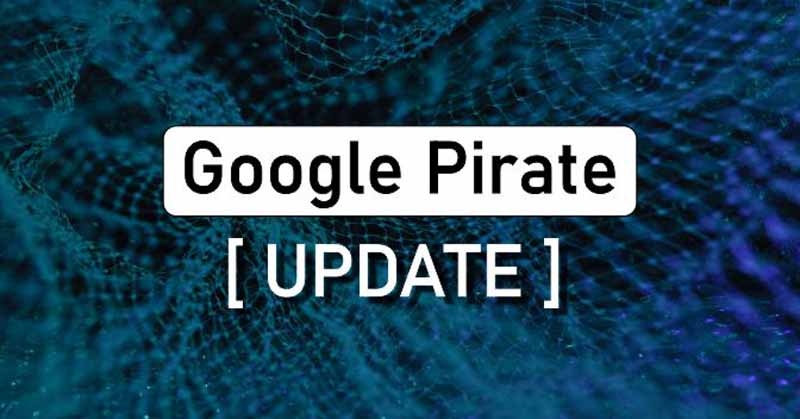
Recognizing that piracy is a serious problem, Google has taken action by reviewing all sites flagged for copyright infringement under the Digital Millennium Copyright Act (DMCA).
Impact of Google Pirate on SEO:
Since this update, if Google discovers that your site violates the DMCA and has been able to verify it, your ranking in organic searches will be significantly penalized.
2.3.6. Google Hummingbird (2013)
Google Hummingbird has had a huge influence on the user experience of search engines. This change allowed the search engine to better assess the “search intent” of Internet users, which allows it to better contextualize user queries and website data.
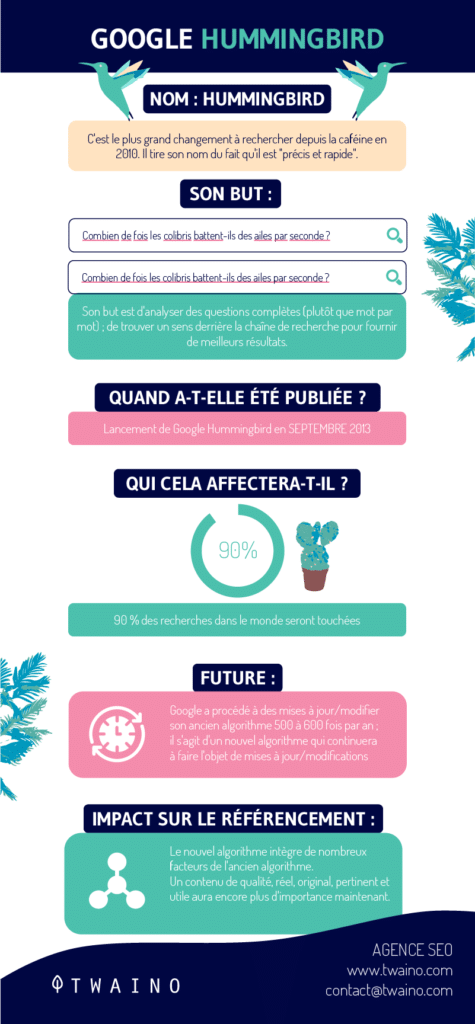
Impact of Google Pigeon on SEO:
The Google Pigeon update had a major influence on the local search industry. It has made it easier for small businesses to connect with their target audience.
Now, if small businesses use SEO fundamentals like getting backlinks and improving domain authority, they can increase their chances of rankings.
Additionally, with this change, it now becomes crucial for small businesses to contextualize their business as local content, employ local SEO strategies such as getting local reviews and using Structured data to easily appear in rich local search results.

Impact of Google Pigeon on SEO:
The Google Pigeon update had a major influence on the local search industry. It has made it easier for small businesses to connect with their target audience.
Now, if small businesses use SEO fundamentals like getting backlinks and improving domain authority, they can increase their chances of rankings.
Additionally, with this change, it now becomes crucial for small businesses to contextualize their business as local content, employ local SEO strategies such as getting local reviews and using Structured data to easily appear in rich local search results.
2.3.7. The HTTPS/SSL (2014)
“HTTPS Everywhere” update is an initiative by Google to make the Internet safer and to ensure that users visit reliable and secure sites from the search results presented to them.
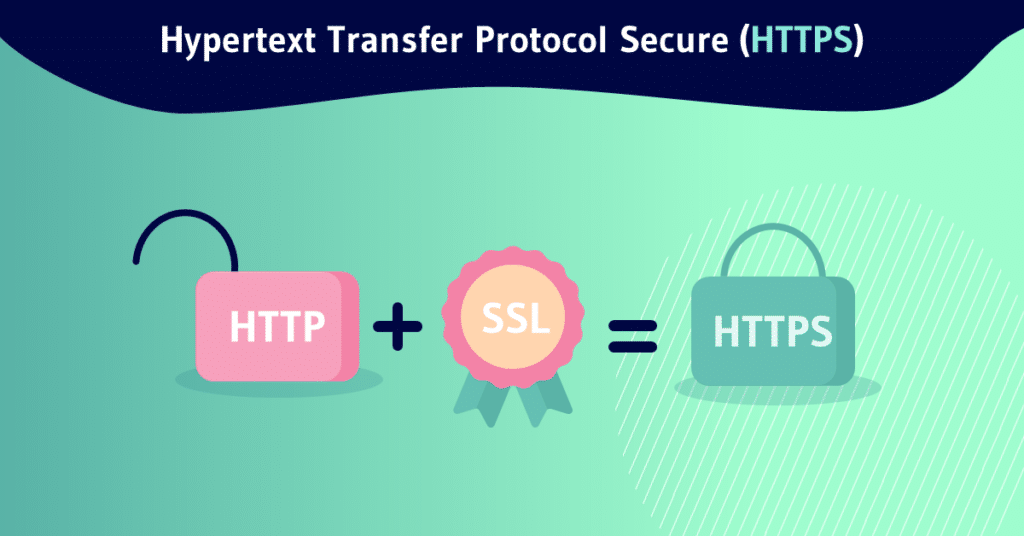
For this, the search engine has encouraged webmasters to convert their websites from HTTP to HTTPS protocol by using SSL certificates on their website servers.
Impact of the HTTPS/SSL update on SEO:
This update allowed Google to prioritize HTTPS as a ranking criterion. This helped establish new user expectations for trust and security in organic search results.
2.3.8. MOBILEGEDDON Update (2015)
Mobilegeddon, also known as Google’s “mobile-friendly” update, originally went live in April 2015. It would be the company’s first major overhaul. to comply with its “mobile-first” initiative.
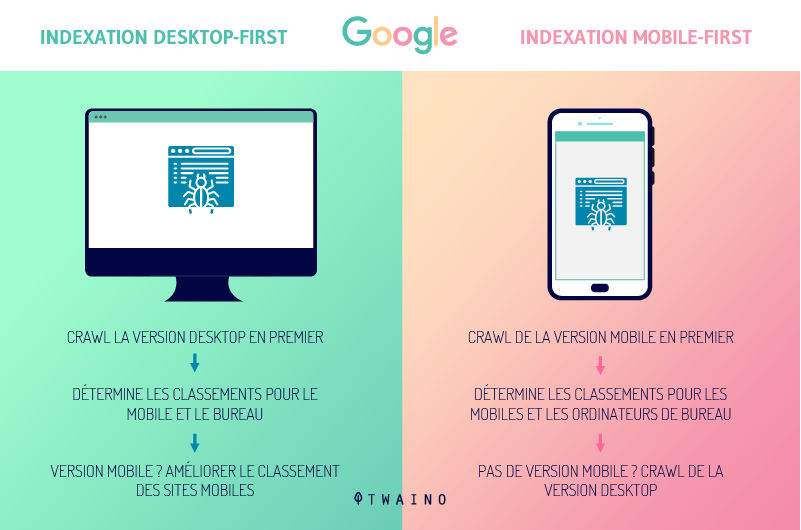
According to this search engine change, a web page is considered suitable for mobile devices only when the elements present on the page are able to be displayed correctly on small screens.
Impact of MOBILEGEDDON Update on SEO:
With this update, mobile friendliness is becoming a new ranking factor. In search results, mobile-friendly versions of websites are now prioritized. But it should be clarified that this only applies to individual pages and not to entire websites.
2.3.9. RANKBRAIN (2015)
RankBrain is an algorithmic change that allowed Google to use brand new machine learning artificial intelligence to determine the most relevant search results for a specific search.
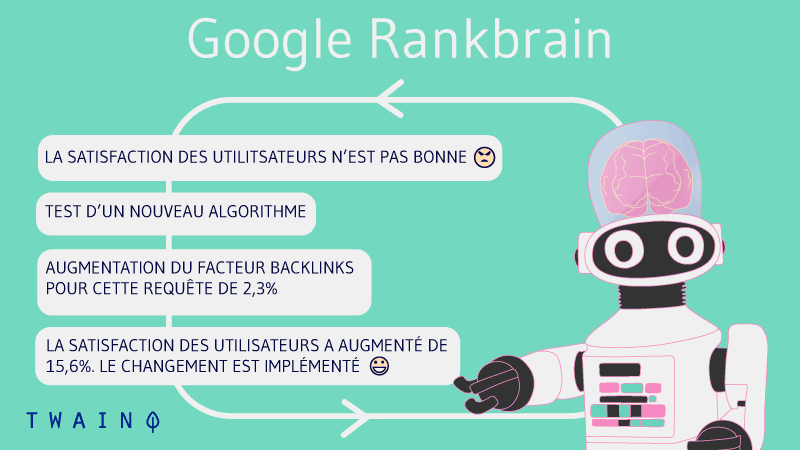
Starting with this update, queries are now subject to an interpretation model that can combine a number of criteria such as geographic location or word count to assess the user’s search intent and provide him with the most relevant results possible.
Impact of the RankBrain update on SEO:
With this update, all ranking factors are no longer consistently applied to all queries. A combination of factors deemed relevant for a first query may not necessarily be the same used to process a second query.
The RankBrain update has dramatically changed the world of SEO and now it’s not just about optimizing standard ranking factors to get a good ranking on the SERPs.
2.3.10. Google Possum (2019)
Local search results have improved following the Google Possum update. Prior to this update, businesses that were located outside of the physical limits of a given city or location were struggling to rank for keywords associated with those locations. This update has solved this kind of problem.
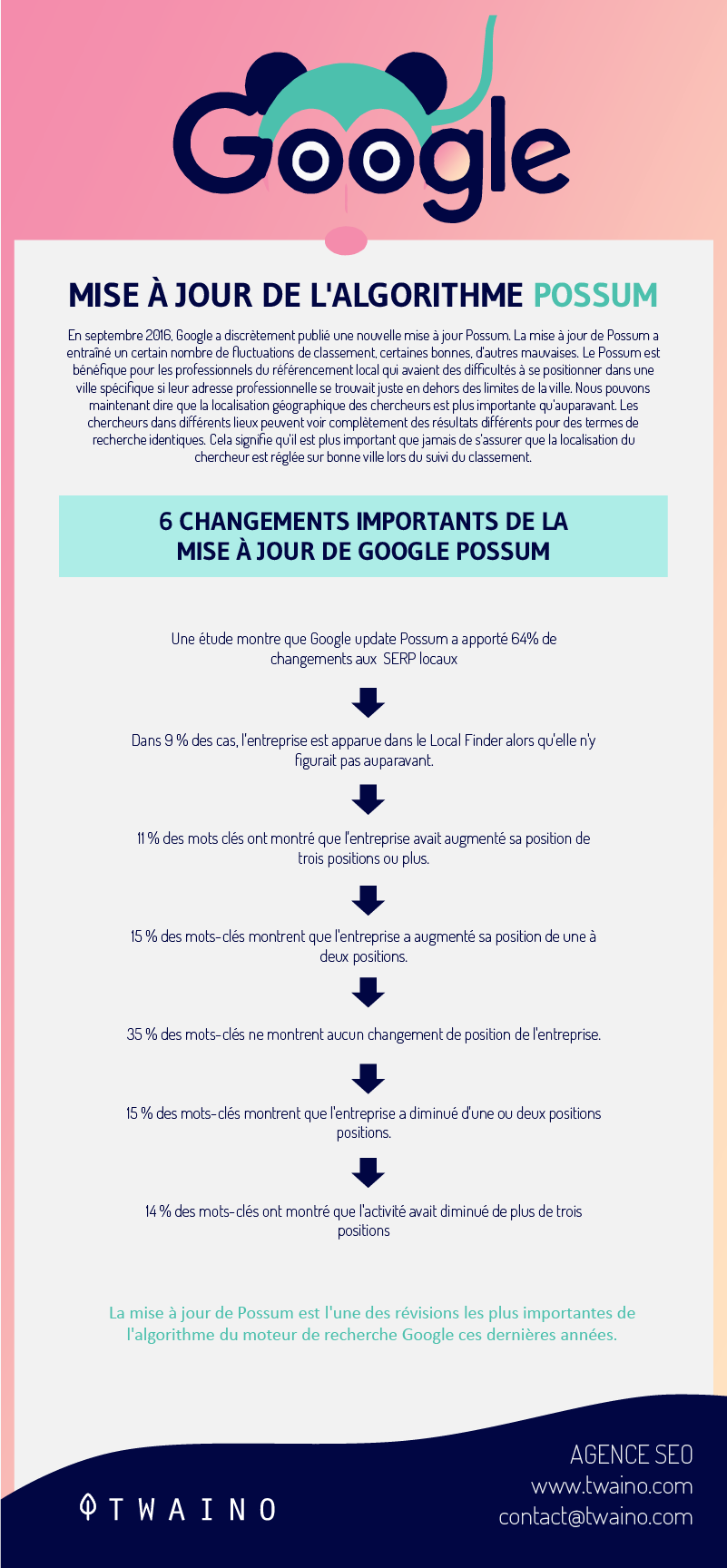
It also increased the importance of the searcher’s physical location and keywords such as “here, not far, near, tonight…” in local search results.
Impact of Google Possum on SEO:
Google Possum is a crucial update for local SEO. During this change, Google reinforced the address and location filters. It has also made it possible to take steps to diversify local results and continue to prevent websites from obtaining a good ranking through spam.
2.3.11. The Intrusive Interstitials Update (2017)
Google changed its algorithm in 2017 to reduce pop-ups known as intrusive interstitials. Intrusive interstitials are pop-ups delivering advertising messages that cover a significant portion of the screen and make it more difficult for visitors to access the information they need.
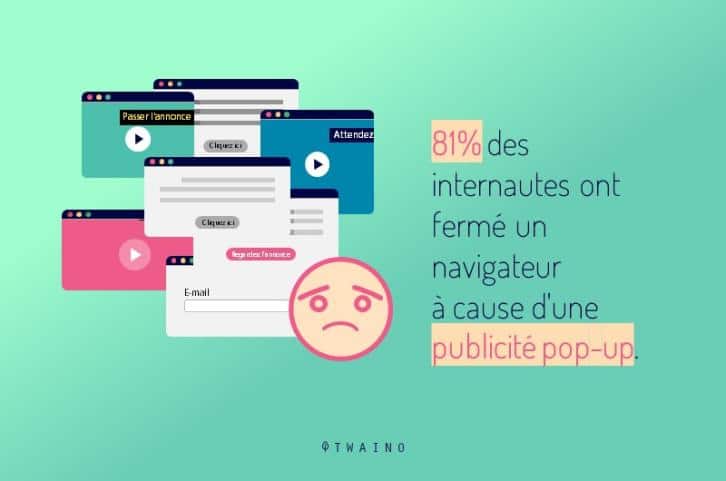
But Google also said the update’s goal was to reduce spam and improve SEO. He therefore reassured that even if a page contains intrusive interstitials, it can still achieve high search engine rankings if it responds effectively to users’ search queries.
Impact of Intrusive Interstitials Update (2017) on SEO:
Abuse of the use of intrusive interstitials is now a Google ranking penalty due to this update.
2.3.12. The Mobile Page Speed Update
In January 2018, Google released an algorithm update that added new ranking factors to boost search results for mobile pages.
This change was part of both Google’s global “speed up the internet” campaign and its “Mobil-First” initiative to help people quickly access information on small screens.
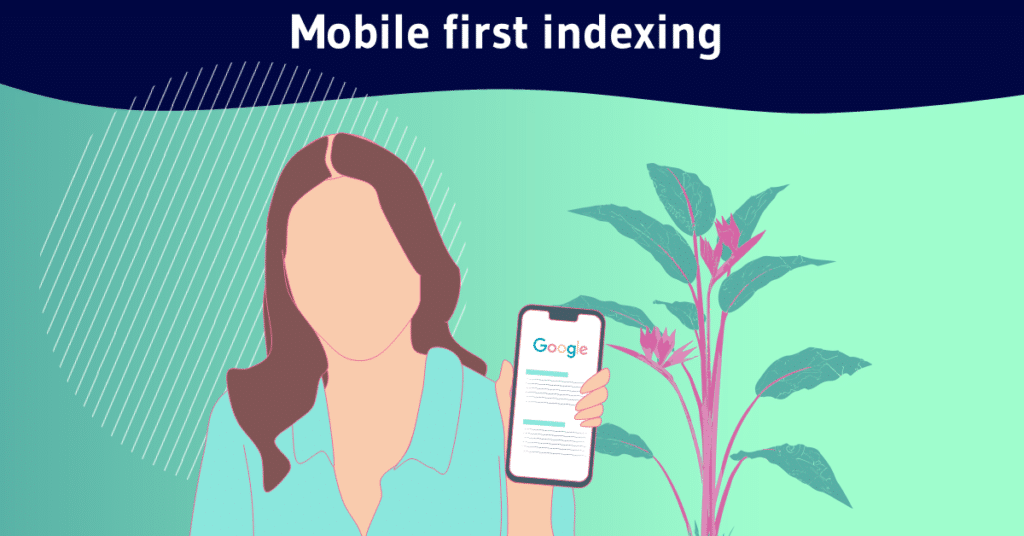
To assess loading speed on mobile devices and the user experience of mobile users, Google announced that its PageSpeed Insights program will now include data collected from the Chrome User Experience Report.
The search engine has indicated the user measures that developers and webmasters should observe to guarantee a good experience for Internet users who use mobile phones or tablets to connect to the Internet.
At the time, Google seemed to favor First Contentful Paint (FCP) and DOM Content Loaded (DCL), which were two of the most significant indicators of fast loading time. But that has since changed and those metrics are no longer.
Impact of the mobile page speed update on SEO:
The introduction of the mobile page speed update has made mobile page speed a ranking criterion in search results for smartphones .
Sites with fast mobile pages performed better in search results, while those with slower speeds saw their rankings deteriorate.
SEOs should work with developers to fix mobile performance issues.
2.3.13. Google Medic Update (2018)
The Google Medic update promoted expertise, authority, and trustworthiness (EAT) as the criteria for ranking content in search results.
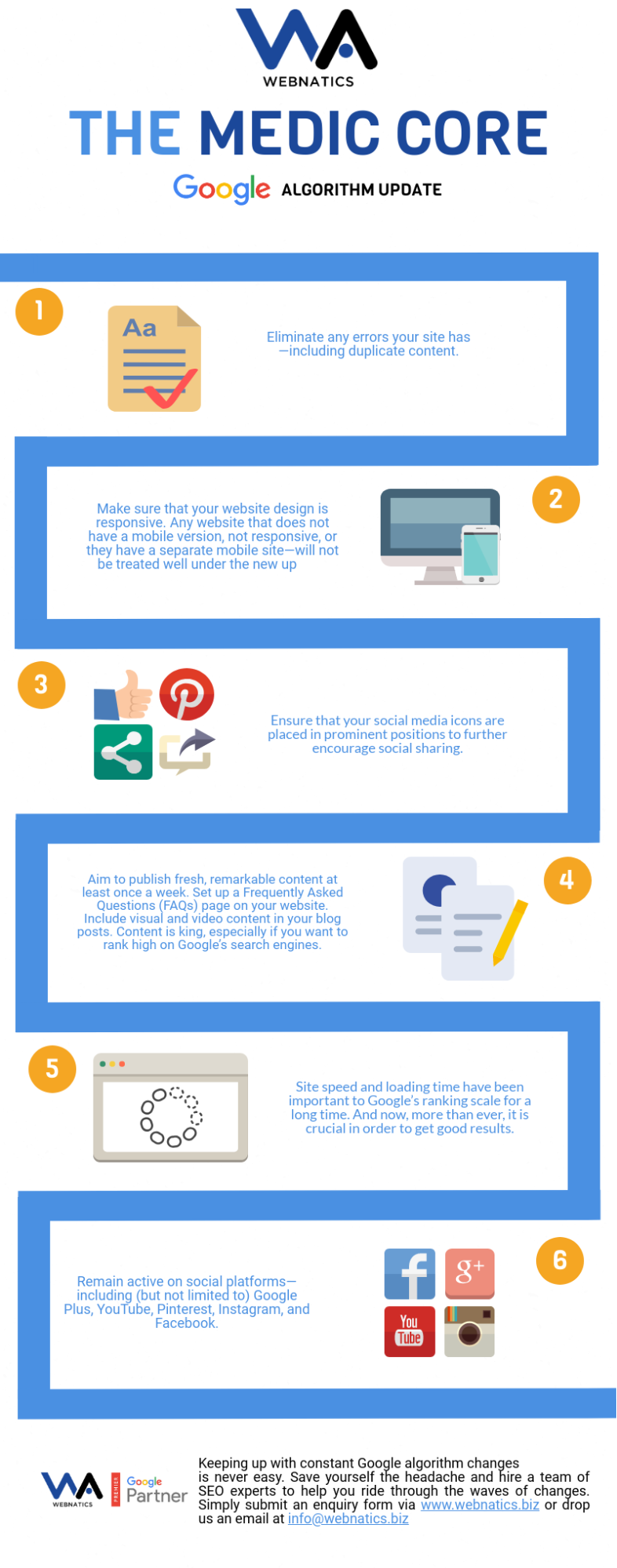
Source : Webnatics
Impact of Google Medic on SEO:
Since the EAT concept was initiated when Google Medic was introduced, a number of criteria can impact your ranking on the SERPs.
Now, if your website has few reviews and backlinks, offers limited information, isn’t updated regularly, or doesn’t have a complete profile of your business, it may have been downgraded in search results due to the absence of these factors.
2.3.14. Google BERT (2019)
The BERT (Bidirectional Encoder Representations from Transformers) algorithm is a machine learning method of natural language processing. It helps search engines determine the meaning of words that human users enter into a sentence.

The BERT update allows Google to more correctly understand search queries and choose the best quality content that is more relevant to searchers’ needs.
After this update, Google is now able to interpret subtle variations in the meaning of words depending on the context.
How does this all work? Take for example the expression “he stood me up”. We all understand that this is not a real rabbit and that the expression means to miss an appointment without first warning the other person. Well, with the BERT update, Google is now able to understand those kinds of subtleties too.
Impact of Google BERT on SEO:
The Google BERT algorithm is dramatically transforming the way web writers now describe topics. The use of particular keywords loses its importance in favor of a natural language associated with these keywords.
Now, instead of scrambling to align targeted keywords, if you produce high-quality content on a certain topic and provide accurate facts and cite sources to back up your claims, Google’s algorithm should be able to recognize your efforts and offer you the ranking you deserve on the SERPs.
This was the list of the last major algorithmic updates operated by Google. Now, let’s take a closer look at a few of them to better understand how Google uses Artificial Intelligence for its SEO algorithm.
Chapter 3: How to use artificial intelligence to improve your SEO strategy?
Apart from Google, you can also use Artificial Intelligence, in particular to strengthen your SEO strategy. Here are some areas of SEO where AI can help you:
3.1. Analyzing Website Data
One of the biggest challenges with analyzing data in SEO is that there is so much to do.
Fortunately, there are a variety of SEO tools and software available on the Internet that offer free and paid services for:
- Website traffic analysis;
- Keyword analysis of competing sites;
- Backlink analysis;
- Identifying problems on a website;
- And many others.
Among the solutions available for these different analysis tasks, you have Google Analytics, UberSuggest, Ahrefs and other tools you can use to generate a competitive analysis report and SEO strategy for your website.
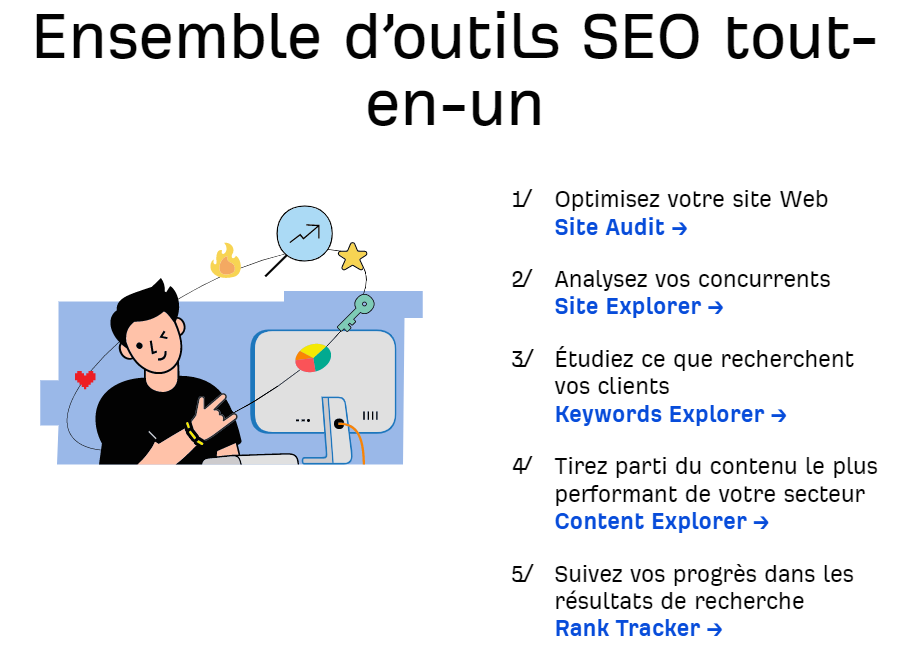
Source : ahrefs
Any tool can generate hundreds of SEO strategies with varying characteristics. But the AI in your SEO plan can sort through all of these ideas and bring them together into a more manageable number that will almost certainly dramatically improve your site’s performance
3.2. Intelligent keyword research
As explained above, there is a lot of information available to exploit in SEO. And since it would be difficult to extract them all by hand, the contribution of an AI tool can be a great help.
The goal of keyword research using AI tools remains the same as traditional keyword research: to identify the terms and phrases that have the most potential for your site.
Except that with AI, the amount of data is greater and is done much faster with great precision in order to save time and save allocated resources.
You can also use AI technology to predict upcoming keyword trends. This eliminates the need to constantly review old data.
All you have to do is look to the future and see how predictive analytics could help you.
MarketMuse, for example, is an AI-powered SEO tool that provides more in-depth information on how to:
- Research and create content;
- Identify the keywords that your customers are not using;
- Create links ;
- Generate an optimization process;
- Get information on topics.
To give an example of the power of this tool, MarketMuse is able to compare your articles to the top 20 sites ranking for specific keywords.
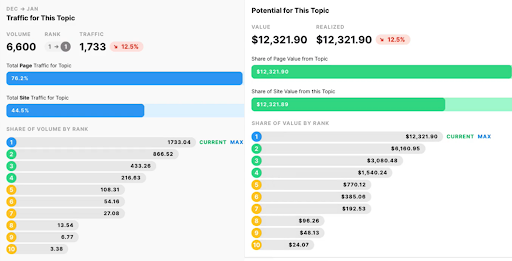
Source : OnceCrawl
The tool can manage to determine the targeted keywords in these first sites so that you can add them to your list of relevant keywords.
By discovering these content ideas that have brought other sites to the top spots in Google, chances are you too will rank well on search engines.
3.3. Determining when to publish content
You need to think about when you will publish your articles in order to reach the greatest possible number of Internet users. The ideal times to post blog posts are between 2 and 4 p.m., for example.
This way, your audience will be more likely to share them more actively on social media. On the other hand, sending e-mails is most efficient between 9 and 11 am.
The goal of content marketing has always been to improve the interest and engagement of your audience in order to build your brand image.
With the analytics capability of AI tools, you can determine when your audience is most engaged. You can then use this data to create content marketing methods, such as deciding what time of day you should post a blog post or send an email.Linkflence is a typical example of this kind of tool. Linkflence allows you to evaluate your marketing performance and measure the results of your campaign in real time.
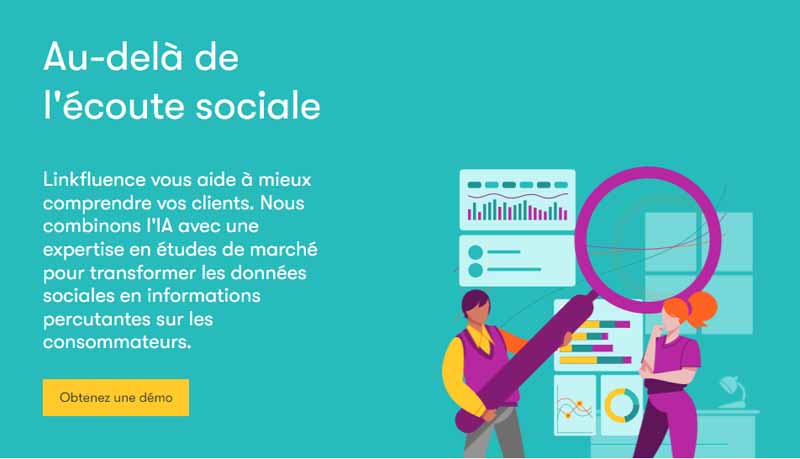
Source : Linkflence
The platform is powered by artificial intelligence and provides all your team members, as well as your company, with quality information hosted in the cloud.
The tool captures and analyzes opinions, identifies emerging trends and suggests themes and concepts that will interest your target market.
Linkfluence’s analyzes can provide you with valuable information about your brand such as:
- The number of Internet users who search for your brand on the web;
- The preferred platforms of these Internet users;
- Their opinion on the quality of service of your brand;
- The languages spoken by these Internet users and their different countries;
- Their engagement with your brand, including how they share your content.
- Etc.
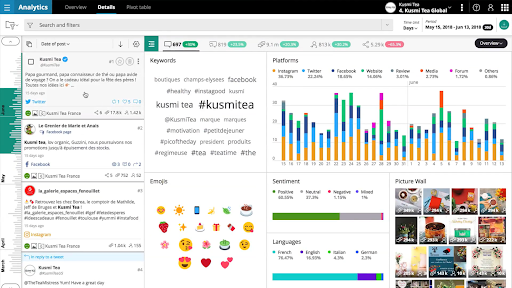
Source : OneCrawl
By default, the tool allows you to see data collected over the past 30 days. You also have the option of defining a range of days and the tool will take care of providing you with the data for this specific period.
Generated analysis data can be exported to any file type for easy presentation to your team members or stakeholders.
3.4. Discovering new topics and optimizing existing content
One of the important battles in content creation is to succeed in coming up with ideas and artificial intelligence technologies can greatly contribute to this. There are tools such as MarketMuse, Frase and BrightEdge who offer suggestions for relevant ideas for content creation.
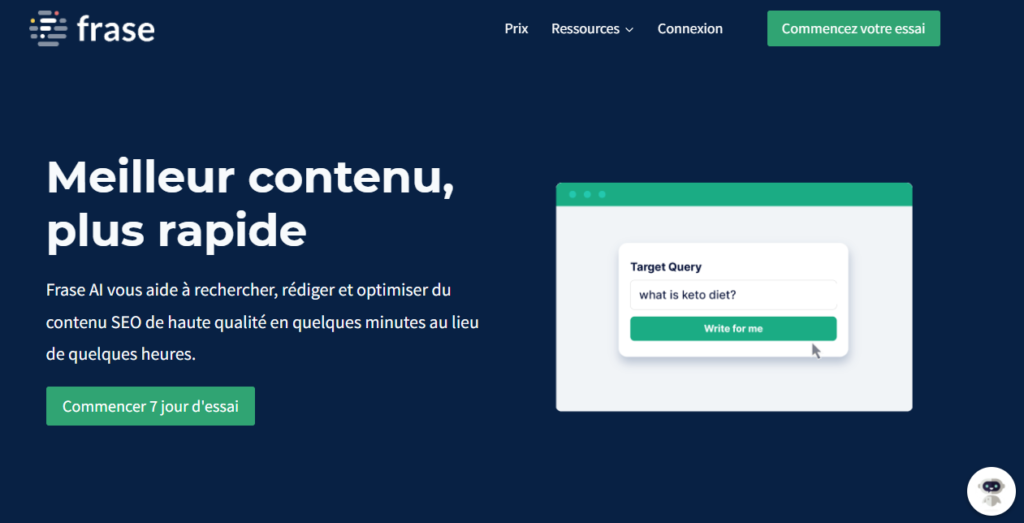
Source : Frase
These tools are powered by artificial intelligence technology that allows them to extract interesting topics from research data that you can develop on your site to grab people’s attention and drive traffic to your site.
Creating new content around search results is one thing, but AI can also help you improve the ranking of your old content. And the previously mentioned tools can also help you do that.
They offer suggestions to optimize your existing content to improve its ranking on the search engine page for target queries. Either way, AI can play an important role in your content plan.
Whether it is for the discovery of relevant topics to develop for content creation or for suggestions to optimize existing content, AI can resolutely help marketing players improve their productivity while maintaining the same quality of work, otherwise see more.
3.5. Smart markup
Tags represent terms that allow you to quickly find the information you are looking for. You can use tags to link items together into a single group.
This will facilitate research for Internet users who can easily find the desired information. Tags can be used to link multiple types of content like blog posts, photographs, etc.
A tag can be:
- A person’s name;
- The name of a city;
- The title of a concept;
- The name of an event;
- Etc.
Where artificial intelligence comes in is that there are AI tools that automatically tag content so that it can be easily found by Internet users.
We have, through the Adobe Sensei tool, equipped with artificial intelligence and machine learning technologies to automatically tag content by intelligently using terms that promote the brand of companies and their services.
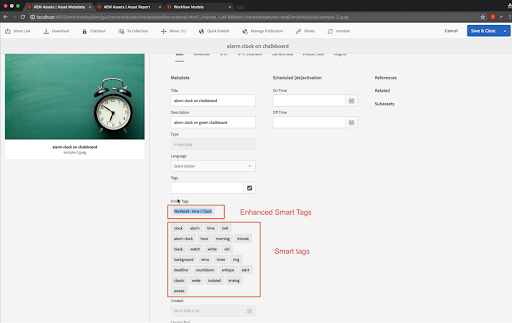
Source : OneCrawl
3.6.OptimizationVoice
search is one of the fastest growing types of search. More and more people are using their voice-enabled devices to search for things online like finding directions, recipes, finding a restaurant near them, and more.
Whichmakes voice-powered search an important part of SEO that you need to consider.
Statista predicts that the number of gadgets equipped with voice assistant functionality worldwide will be 8.4 billion by 2024, exceeding the world’s population:
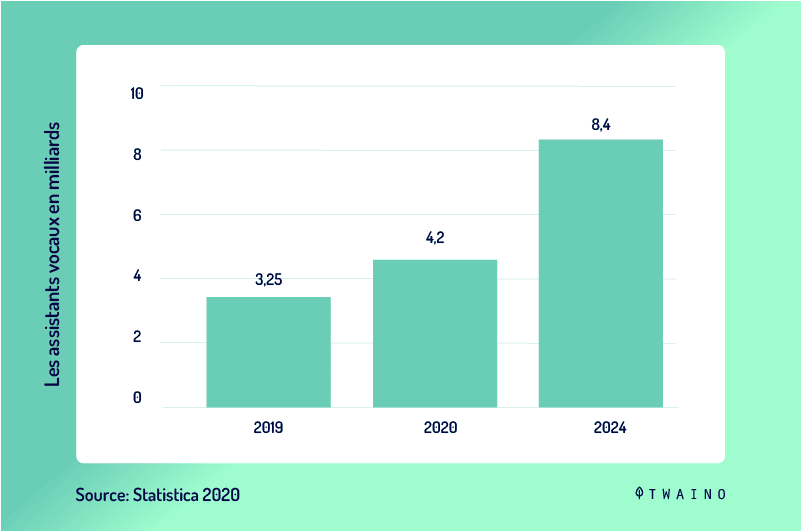
The majority of voice searches are common questions people ask one of the main ways to improve Voice SEO is to simply answer these questions. And this is where the importance of AI tools comes in. tool Frase, for example, can help you develop articles optimized for voice SEO by listing the frequently asked questions that Internet users are looking for. You can then produce content based on these queries.
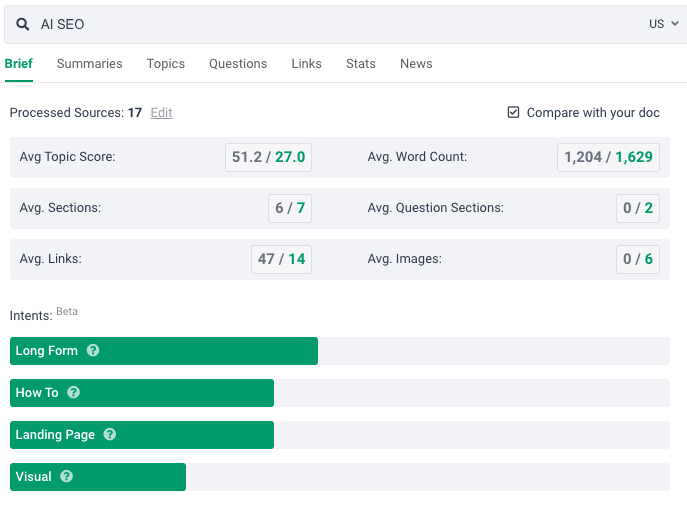
Source : NeilPatel
Another characteristic of voice search is that they are usually conversational type queries. And to write content with a conversational tone, you have several AI tools such as Grammarly and Hemmingway that can be of great help.
But it should be noted that optimization for Voice SEO is a very competitive field because voice assistants only offer one answer unlike SERPs which can display up to 10 different results on a page.
So you need to put a pretty strong SEO strategy before you earn good ranking on voice assistants.
3.7. Hyper-personalization
Nothing is more attractive to a consumer than a company that offers precisely what he wants, allowing him to interact with the company.
Today, consumers appreciate the fact that when a new product or service is launched on the market, a company thinks of them. This is why personalization is essential for this generation of consumers, which also has SEO benefits.
According to a survey, 79% ofbusinesses have met or exceeded their revenue goals through a personalization technique that includes the use of tailored smart engines that understand consumer desires.
The advantage with Artificial Intelligence is that it can also be useful in decision-making, which allows you to satisfy the requests of your audience much more quickly and efficiently.
And this because AI and machine learning can collect customer information, analyze user behavior and provide tailored offers that are more likely to interest your audience.
This is a powerful asset that can improve your sales since statistically, 91% of online consumers admit to buying from an establishment that offers them products adapted to their needs.
There are smart tools like HubSpot or UserFox that can be used to improve a company’s marketing charts.
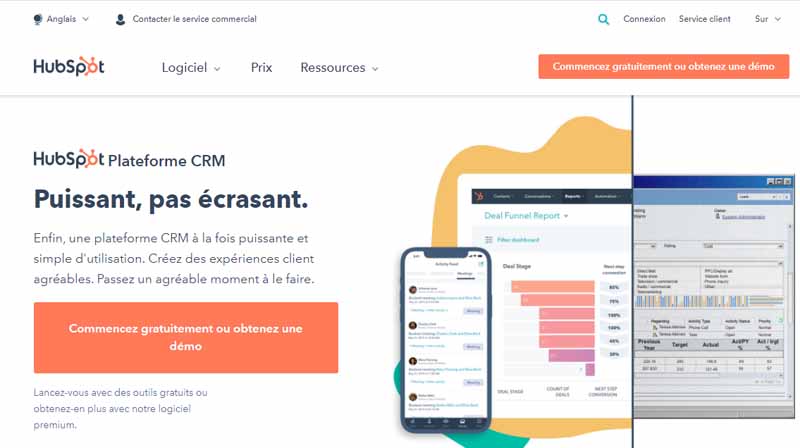
Organized Drip Campaigning with AI tools also plays an important role when it comes to personalizing a company’s offers based on consumer profiles.
Alibaba, for example, uses data collected on its consumers to offer them recommendations.
3.8. Local search results
As explained in the previous chapter, AI is also useful in local referencing, particularly in locating establishments. Google Maps and many other online geolocation services are increasingly used by Internet users.
Today, whether looking for a local restaurant or the nearest hair salon, many Internet users have acquired the reflex of consulting Google or other search engines. Which makes local SEO important especially if you have a local establishment. To give your current local SEO strategy a boost, you can use AI SEO tools likeGoogle’s Cloud Translation API app.
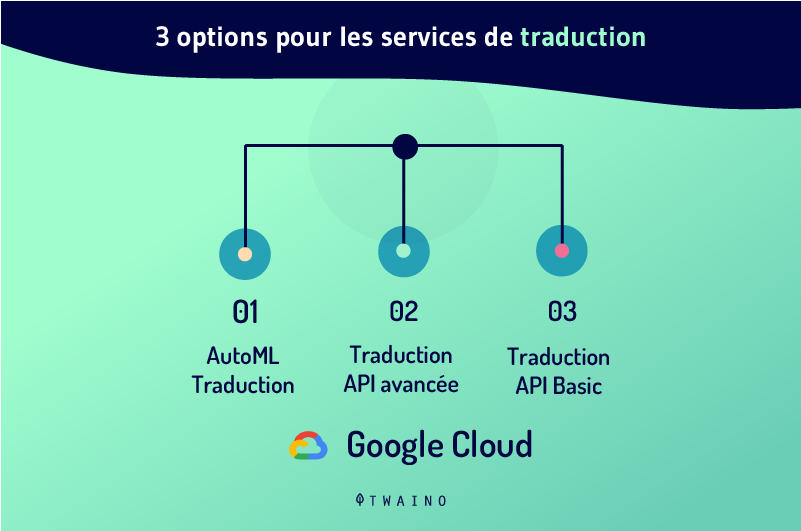
It allows you to have quality translations available in more than a hundred languages on your website and your applications thanks to a very simple integration procedure.
This can be a big plus in your localization strategy, especially if you’re a business with an international customer base, as offering content in a foreign language can seriously affect your ranking in local results.
Take advantage of Google’s machine learning technology to improve your visitors’ browsing experience with pages that automatically translate into their language.
3.9. Visual Image
Search Visual Image Search is an AI feature that is starting to be used more and more in SEO. But it must be said that visual image search is only used mainly in the e-commerce sector.
The main brands that use this AI functionality are Google Lens, Amazon StyleSnap and Pinterest Visual Search.
Other brands specializing in retail on mobile applications such as Farfetch or Burberry also use visual image search.
To illustrate what it looks like, the British brand Burberry has launched a virtual reality program with the support of Google.
This is an AI purchasing tool that allows users of its e-commerce site to view the products they select in 3D in order to get an idea of the condition of use directly on their phone before proceeding. purchase.

Source : Zelst
As for Farfetch, the brand also offers its users an advanced AI functionality that offers the possibility of simply taking a photo or a screenshot of an item of clothing of their choice and immediately going to “buy the look”.
The idea is to offer a more personalized shopping experience to users of the brand’s platform.
3.10. Chatbots
We cannot talk about AI and machine learning without talking about chatbots. These are tools also equipped with artificial intelligence that are used to converse with visitors to an application or website.
Several companies have developed their own chatbot directly on their official platform or on Facebook Messenger.
For example, we have Duolingo, the famous language learning platform that broadcasts lesson sequences animated by a chatbot. The platform ‘s CEO explained that initiallythe idea was to put two users of different languages together to help each other learn the language. But very quickly, the Duolingo team realized that people were not very comfortable conversing with foreigners and in another language.
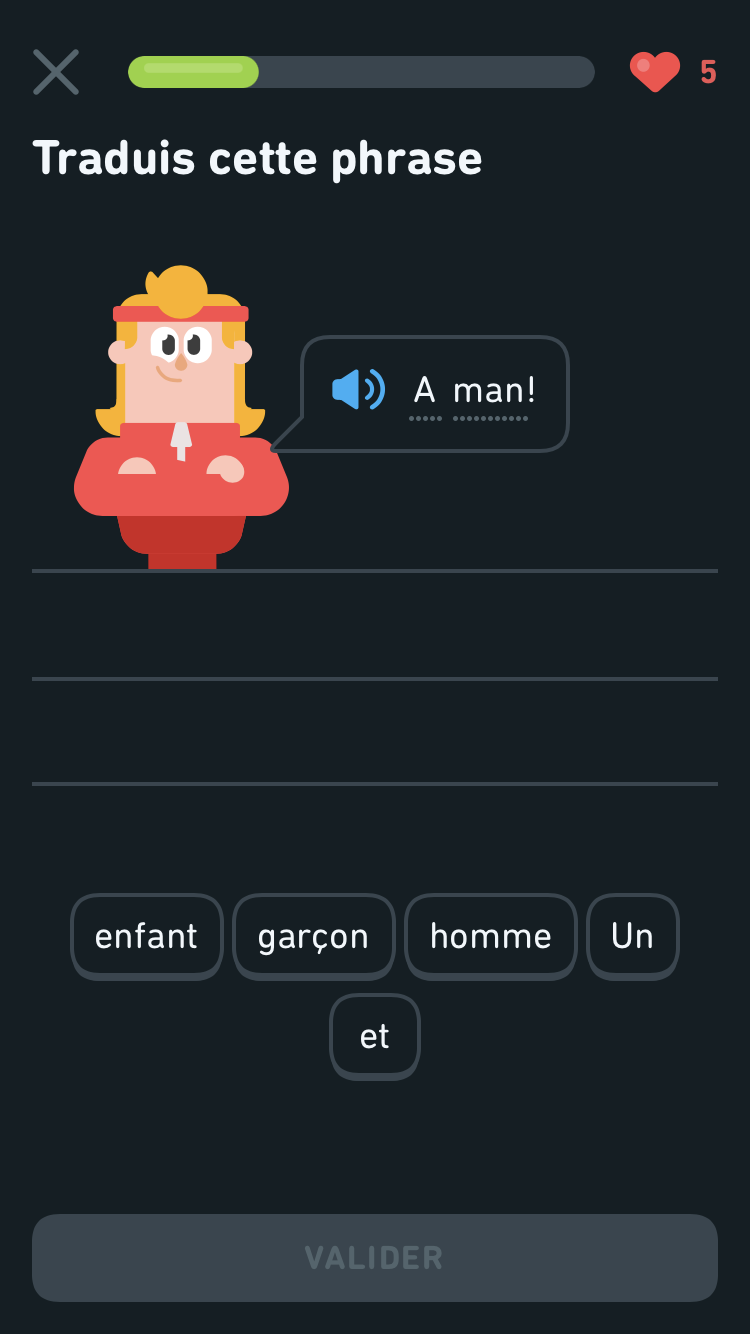
The team therefore had the idea of offering a chatbot that will teach the desired language to each user. It’s an idea that has been very successful and has advantages such as 24/7 availability and the absence of any critical judgment that could hinder users.
In addition, chatbots can be an excellent tool to strengthen the proximity between a company and its customers by instantly answering users’ questions.
The latest versions of chatbot are equipped with artificial intelligence, which makes the conversion with the visitor more interactive.
Conclusion
Keeping up with the latest technology is essential in a rapidly changing world. And to stay in the race, you must meet new challenges while maintaining the preferences of your customers.
Website promotion is also changing at a rapid pace. And search engines are getting smarter with demanding ranking criteria focused on user experience.
Hence the importance of artificial intelligence in the world of SEO. With their cognitive capacities comparable to humans, tools equipped with artificial intelligence help in the creation and optimization of content for both textual search and voice search.
They also help companies improve their connection with customers and thus become more engaging for user satisfaction. Which is sure to improve traffic and business rankings on search engine pages.
In this guide, we had to present in detail the benefits of Artificial Intelligence in SEO as well as the different ways to use it in your current SEO strategy.
I hope this content has been useful for you to understand the relationship between AI and SEO and especially how to use it for an effective and efficient SEO strategy.
If you have an experience, ideas or even questions related to AI SEO to share, do not hesitate to formulate them in the comments.

